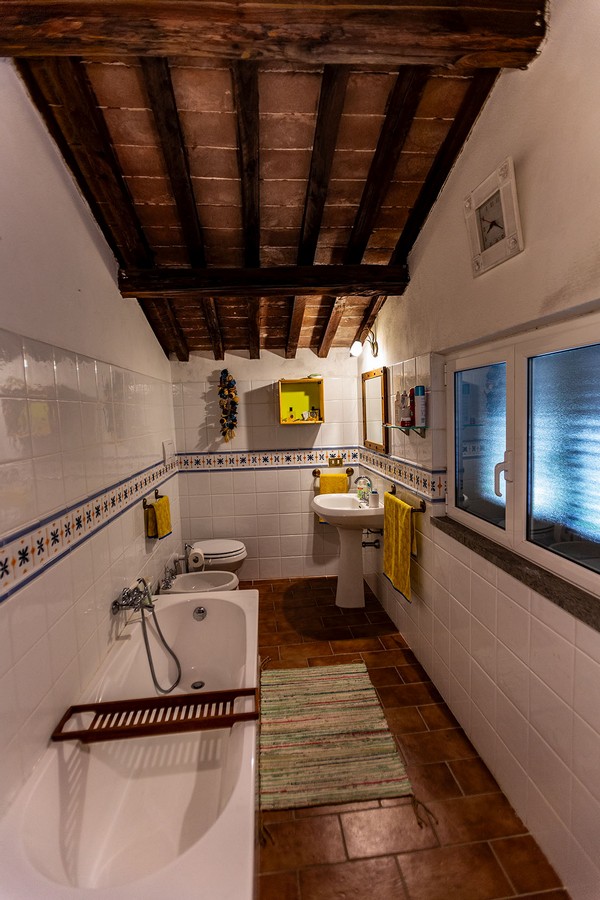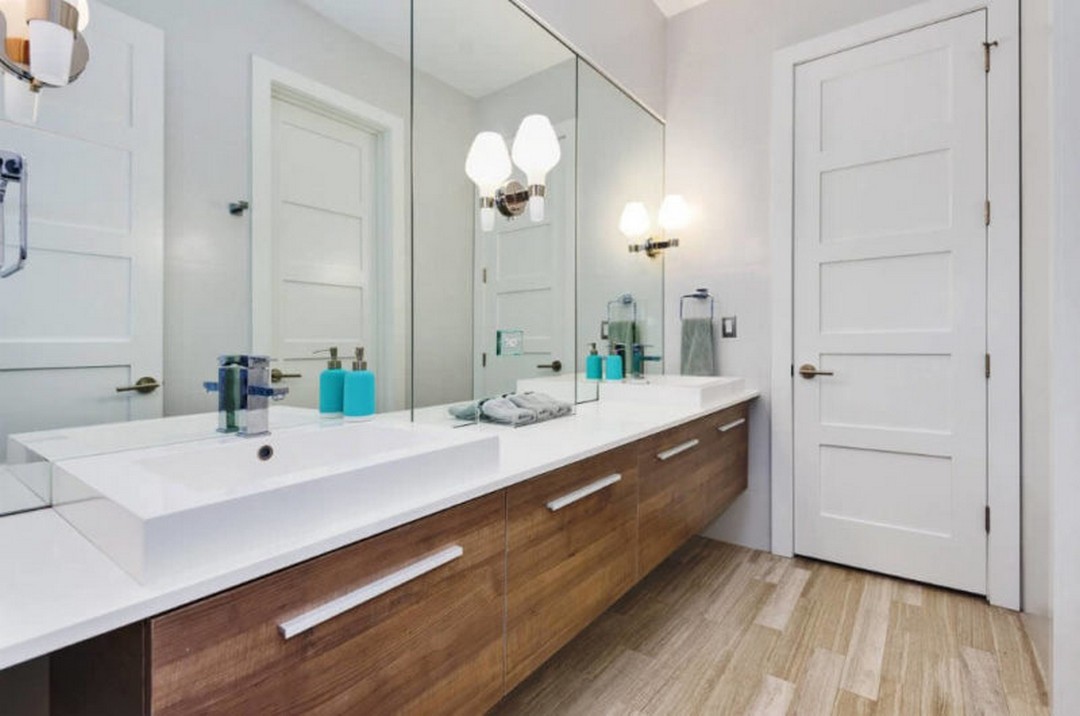
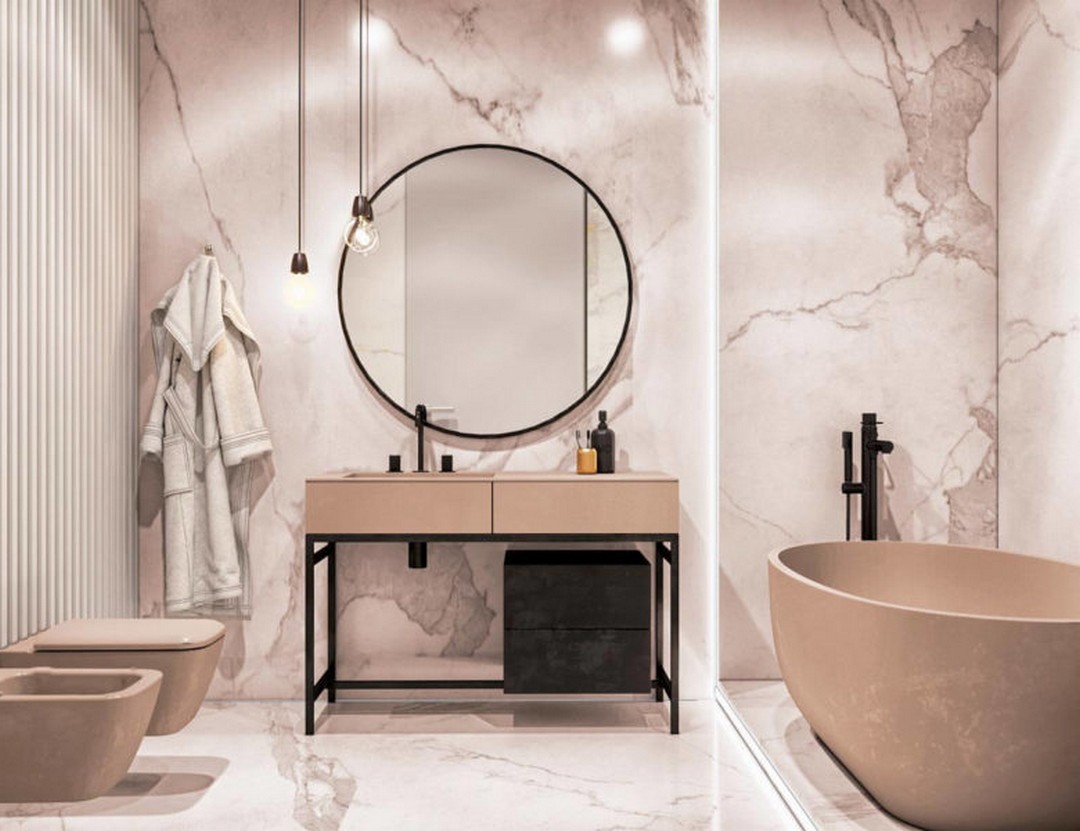
In many homes, the bathroom is the smallest area. Despite this, the room serves important functions, which cannot occur in any other part of the house. Unlike rooms such as the dining room, the bathroom is an indispensable component of any residential building.
Its small size, however, many times limits creativity. Regardless, with the right approach, you can easily design a bathroom that is not only practical but also appealing visually, with all the elements harmoniously connected.
The main trends in the modern bathroom interior
For many people, every day begins and ends in the bathroom, since it is the area of the home where most people get ready to leave the house or go to bed. You must admit that it is much more pleasant to equip the bathroom so it is cozy, allowing you the most relaxing bath or shower.
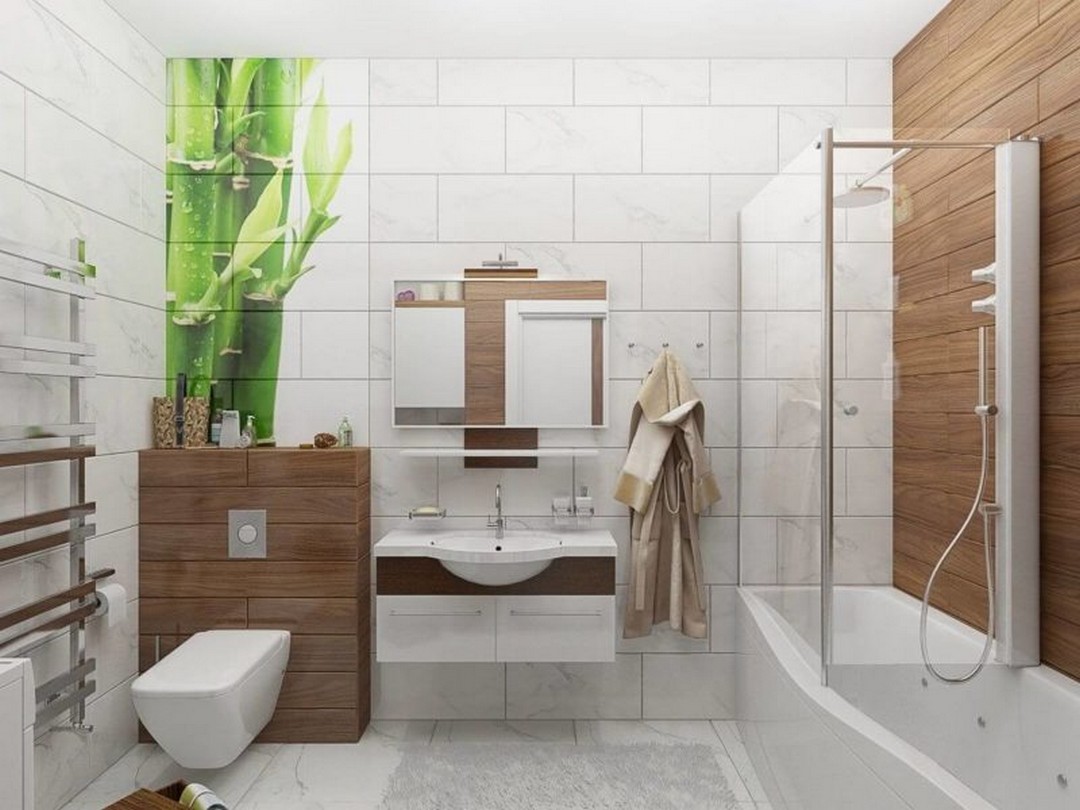
The traditional design of the bathroom consists of three important elements – a bath or shower, a sink, and a toilet (if the bathroom was not separated from the bathroom). However, today, the bathroom has more components, including a bidet, a hydro box, a washing machine (sometimes with a dryer), and even a home sauna. The evolution of the bathroom is partly because building contractors are now allocating more space for a bathroom, and, as a result, designers have more space for the realization of daring and non-standard ideas.
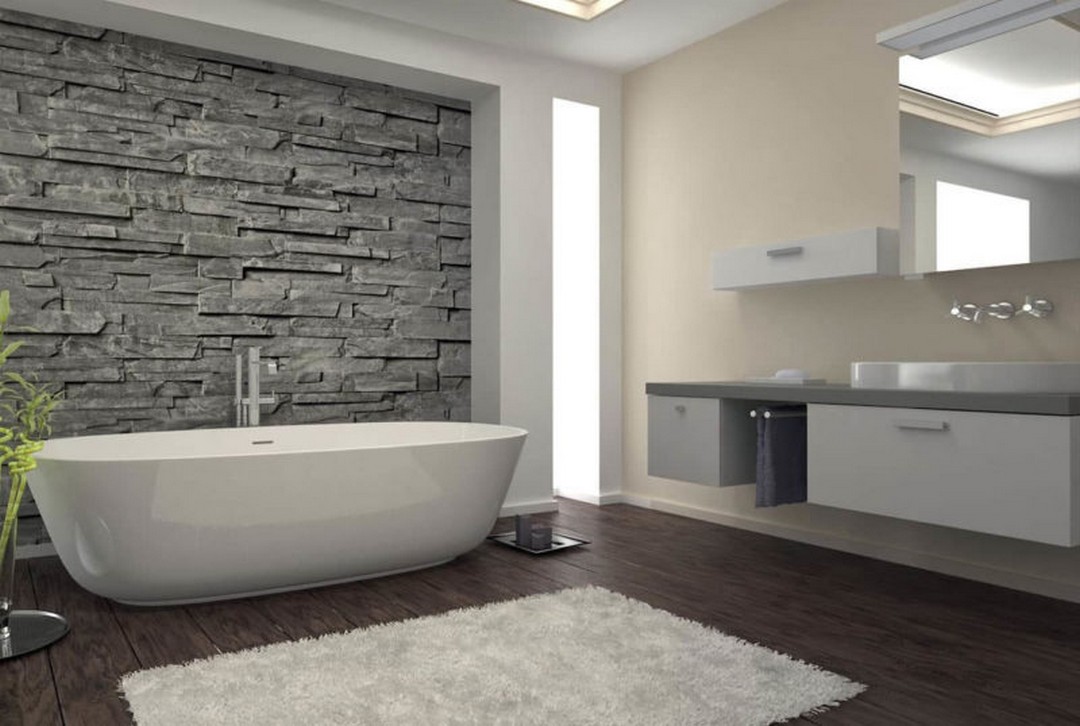
Talking of the current trends in the design of the bathroom, the following motives are distinguishable:
- The bathroom is a practical area where the layout is thought out to the smallest detail. Plumbing, furniture, and other items should be positioned to allow movement.
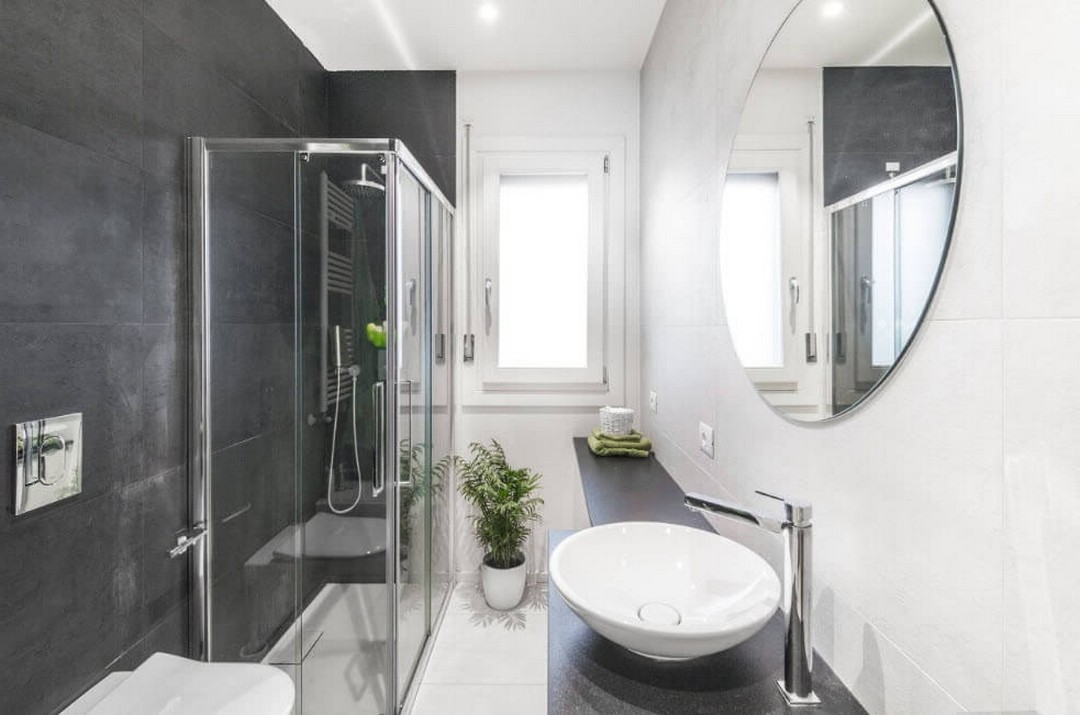
Freedom of movement is currently the main criterion for bathroom design
- Even if your bathroom has a relatively large area, make sure to utilize tricks that visually increase the space. These range from using many mirrors to installing transparent and glass elements in the room.
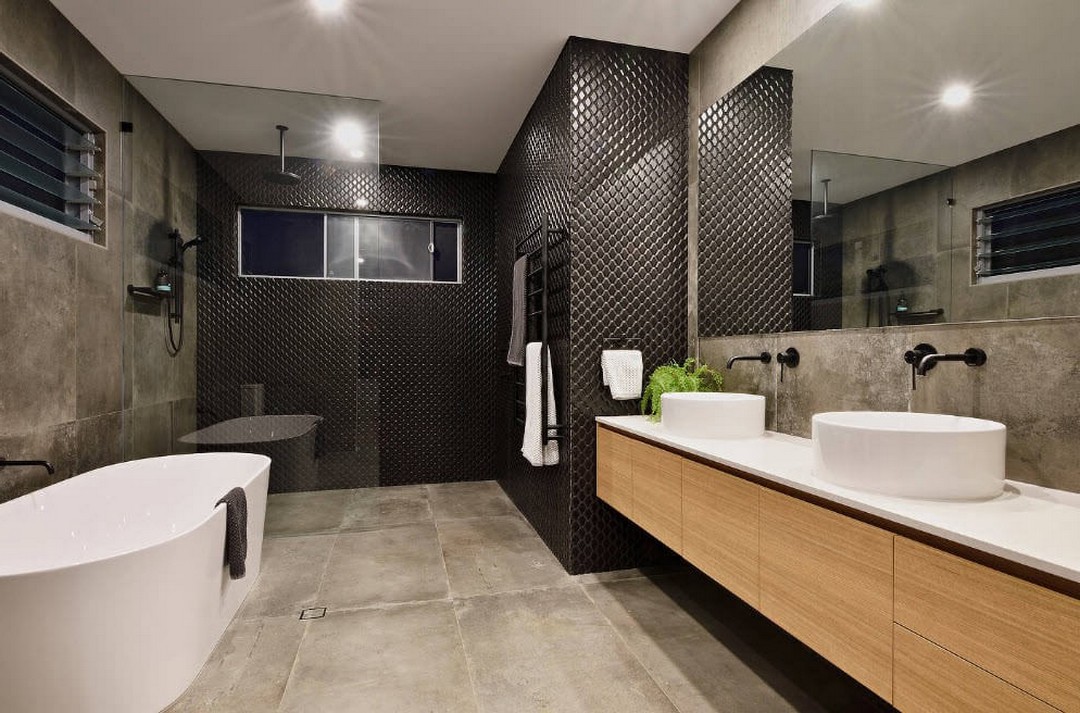
- While plumbing serves a practical function, today, there are unique variants that also serve as decor. You can easily find non-standard plumbing options that are bound to spruce up your interior.
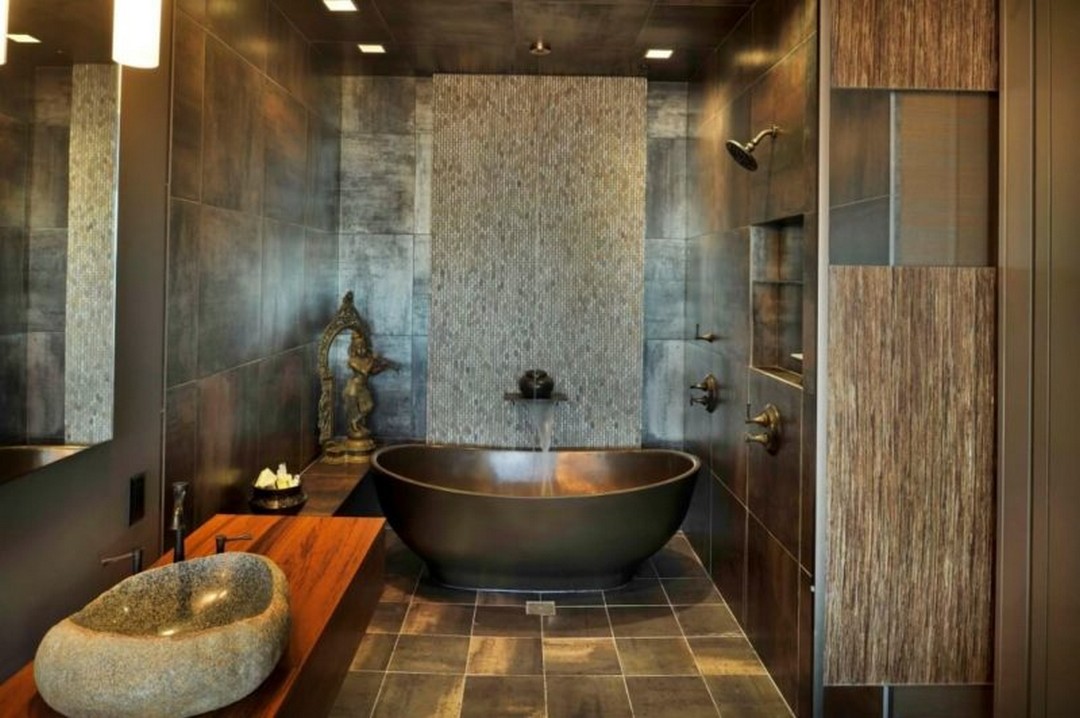
Original bathroom design
- Lighting: Multi-level lighting is a common technique in today’s bathrooms, highlighting the interior and helping to visually increase the space.
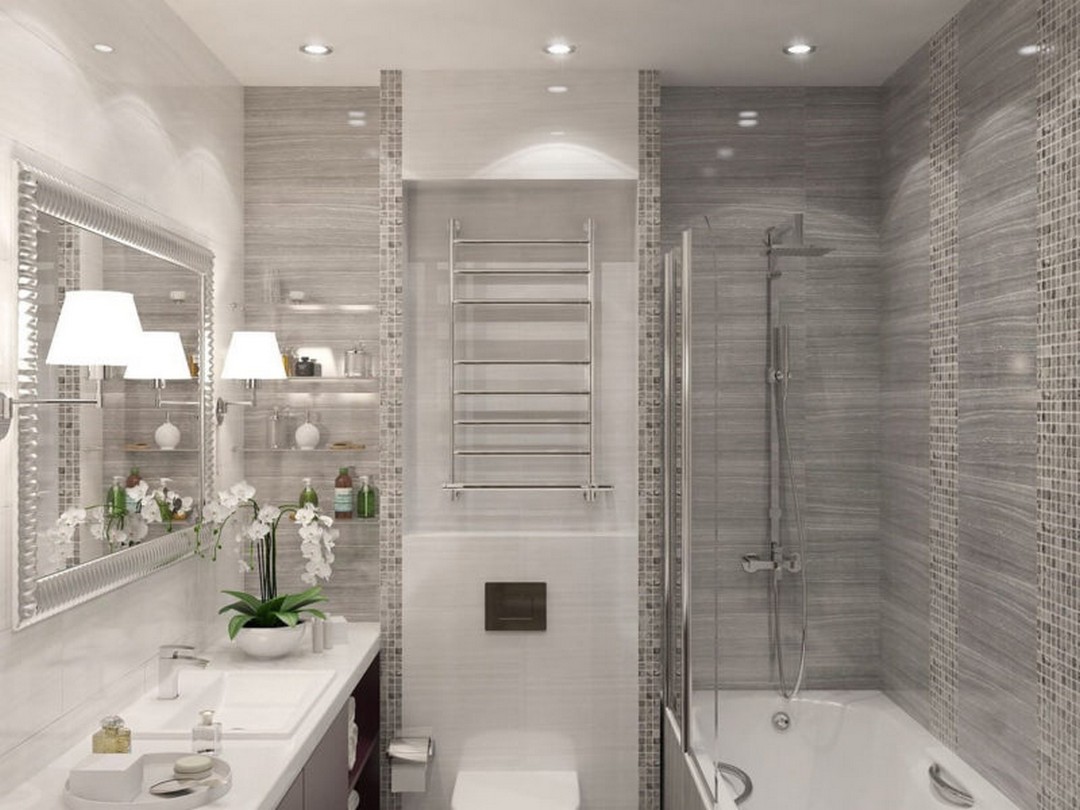
Diverse bathroom lighting
- Any decorative elements in the bathroom should ideally fulfill a practical function too. Leave non-practical décor items like figurines and photo frames for the living room or bedroom.
Modern bathroom fixtures
The color scheme of a modern bathroom
Traditional designs did not pay particular attention to achieving a stylish bathroom. Fortunately, today, designers offer plenty of ideas for bathroom interiors, allowing you to choose the option that is suitable for your particular bathroom. Given the layout of the room and its footage, you can achieve a fashionable, comfortable, and at the same time practical bathroom. The choice of the shade of the walls and furniture in the room will depend mainly on the preferences of the owners of the house. The most popular color options for the bathroom are:
White bathroom: This is a classic version that can visually expand the space and infuse it with a refreshing lightness.
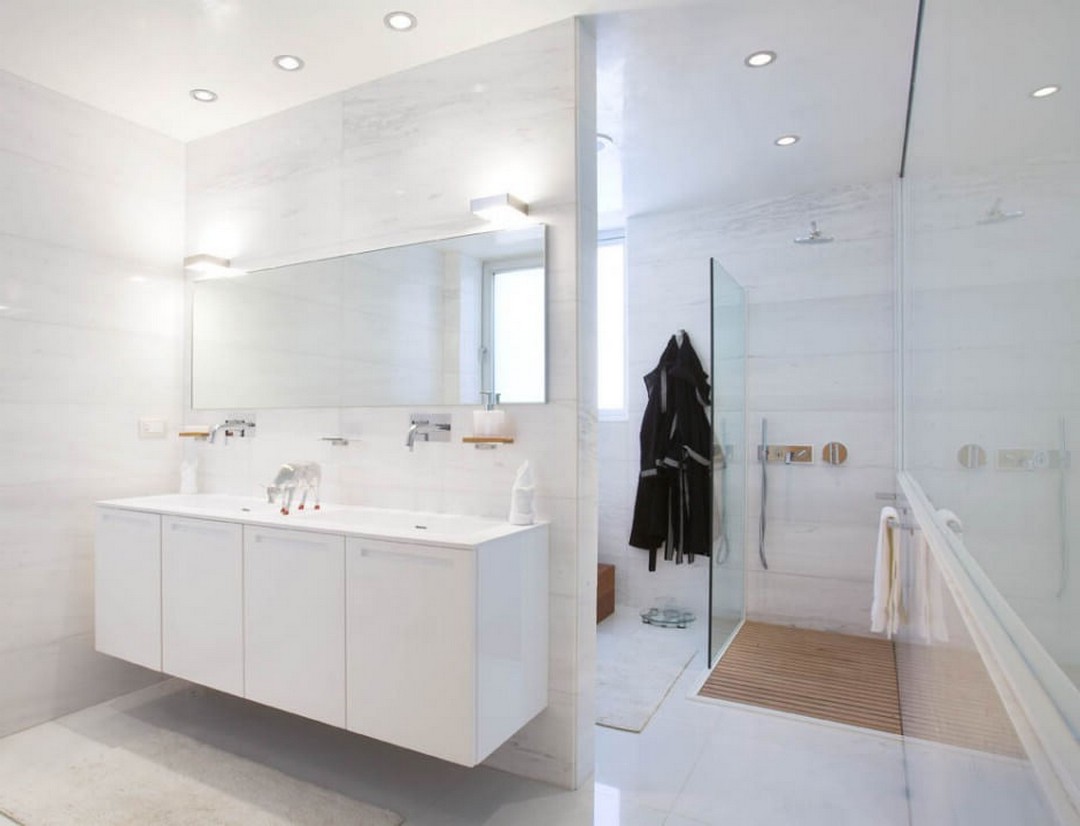
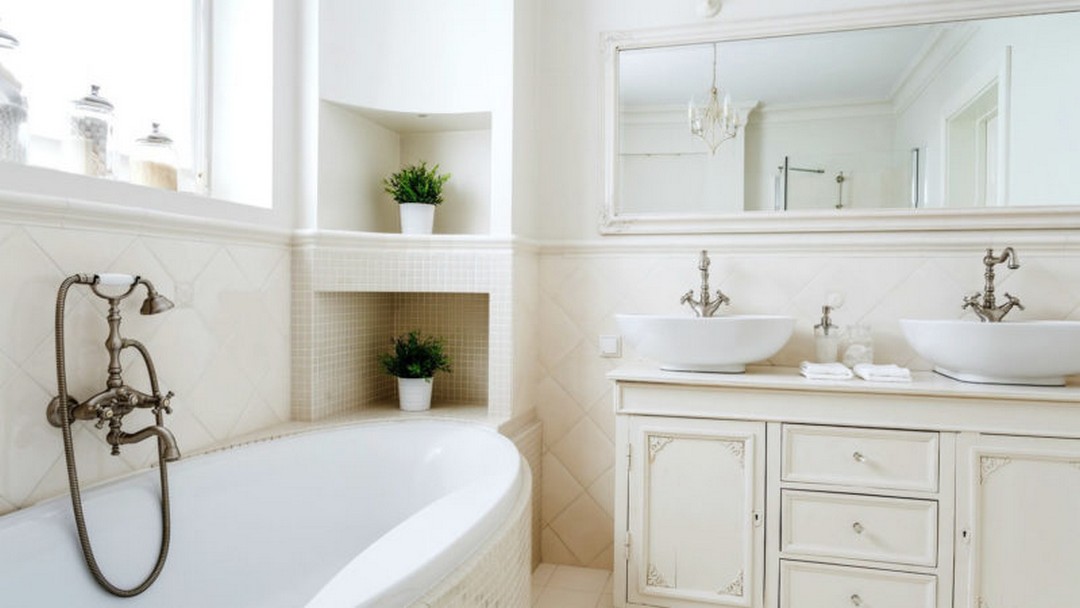
Black: A noble color that is relevant for large spaces.
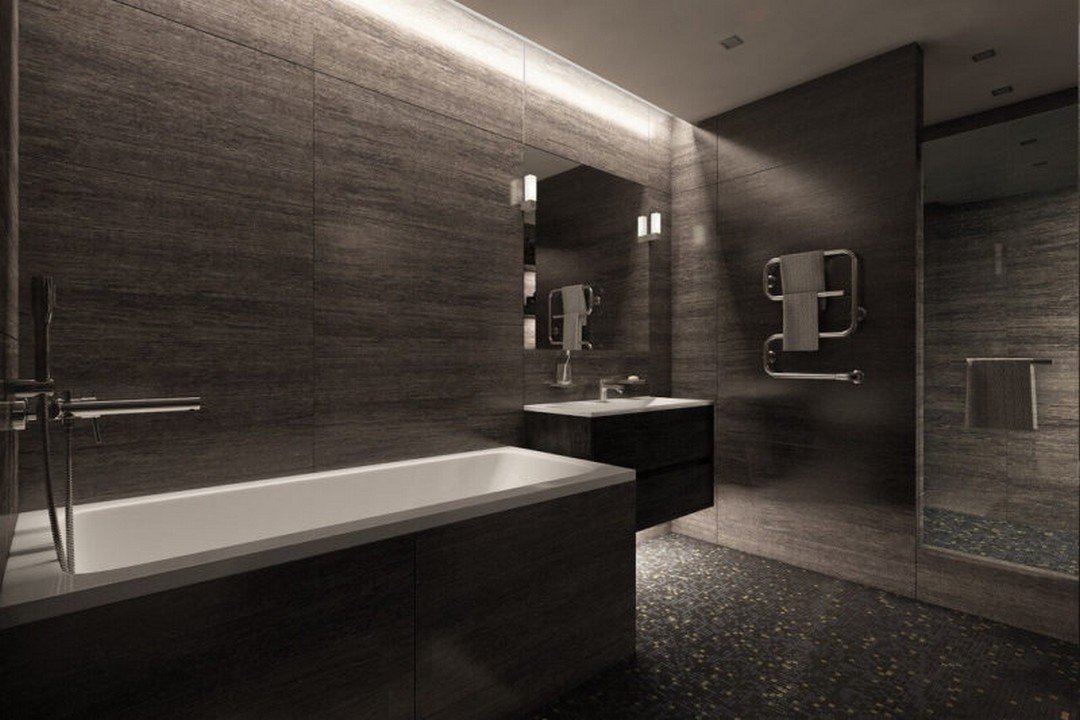
Red: A bold and original solution for the bathroom. Such a shade will undoubtedly infuse your bathroom with vigor and energy.
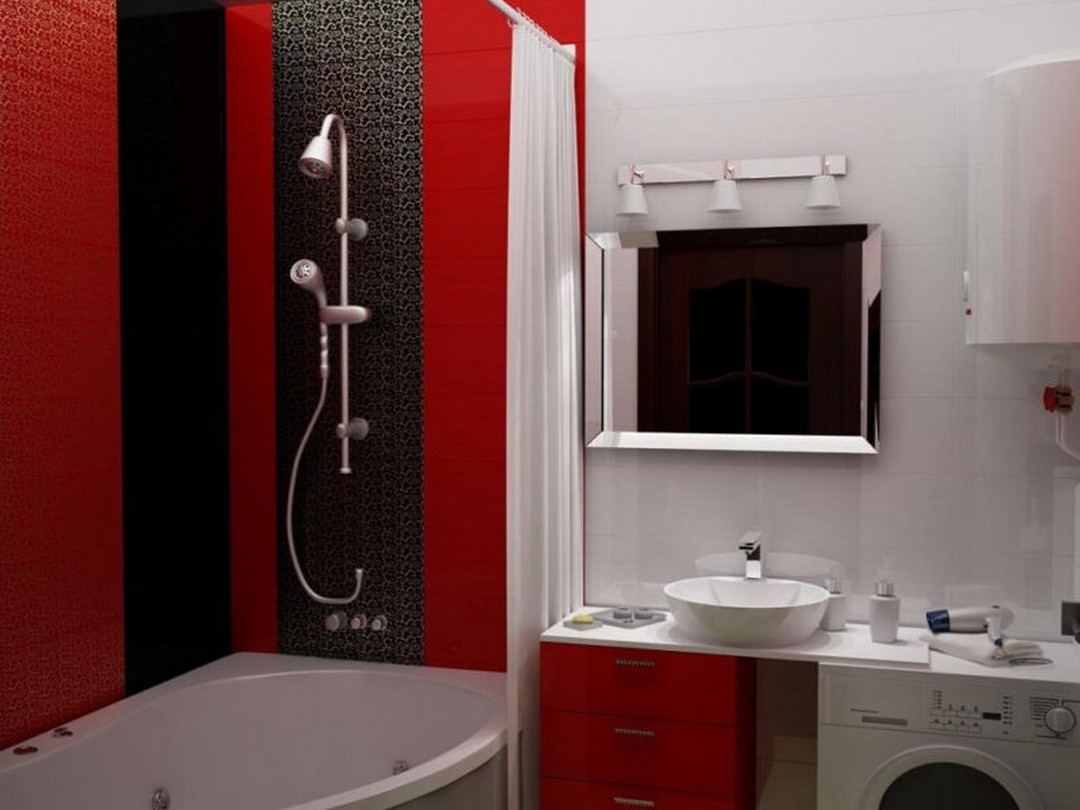
Bathroom design in red and black
Yellow and orange: These shades improve the mood and allow you to recharge.
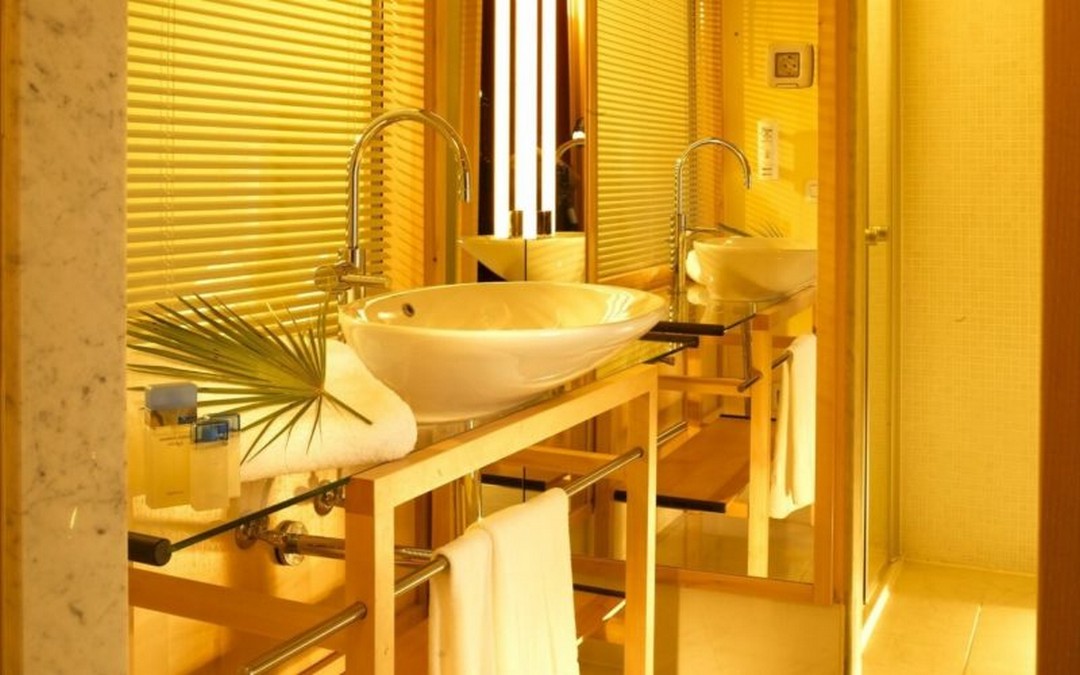
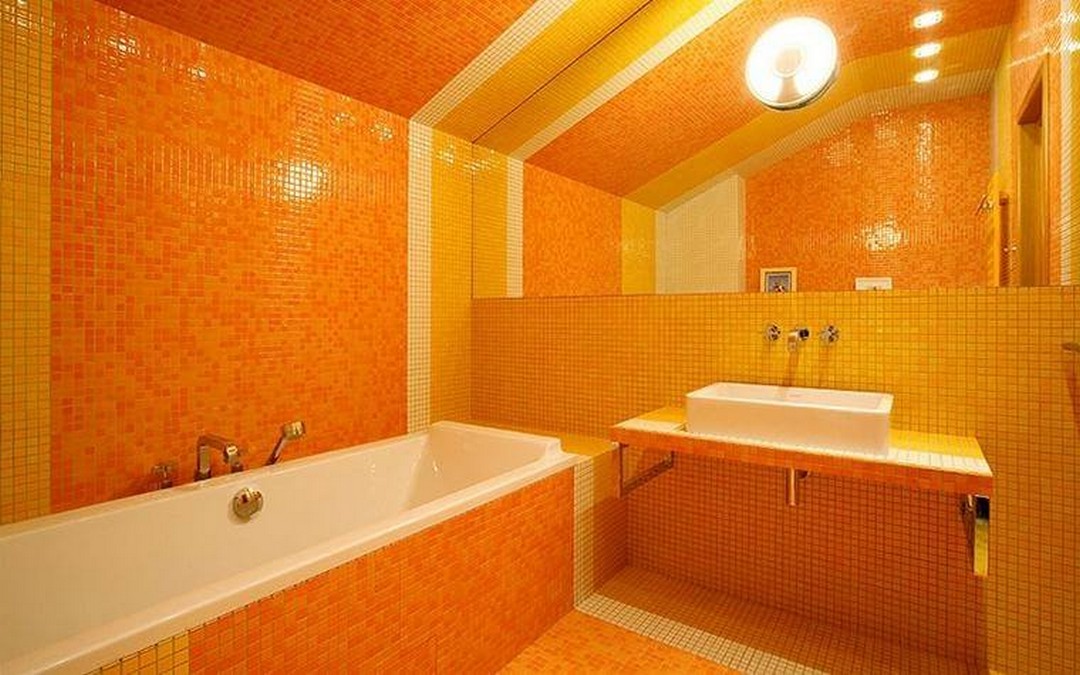
Yellow bathroom design
Brown: It comes in a wide variety of shades, from chocolate to wenge, brick, terracotta, and others.
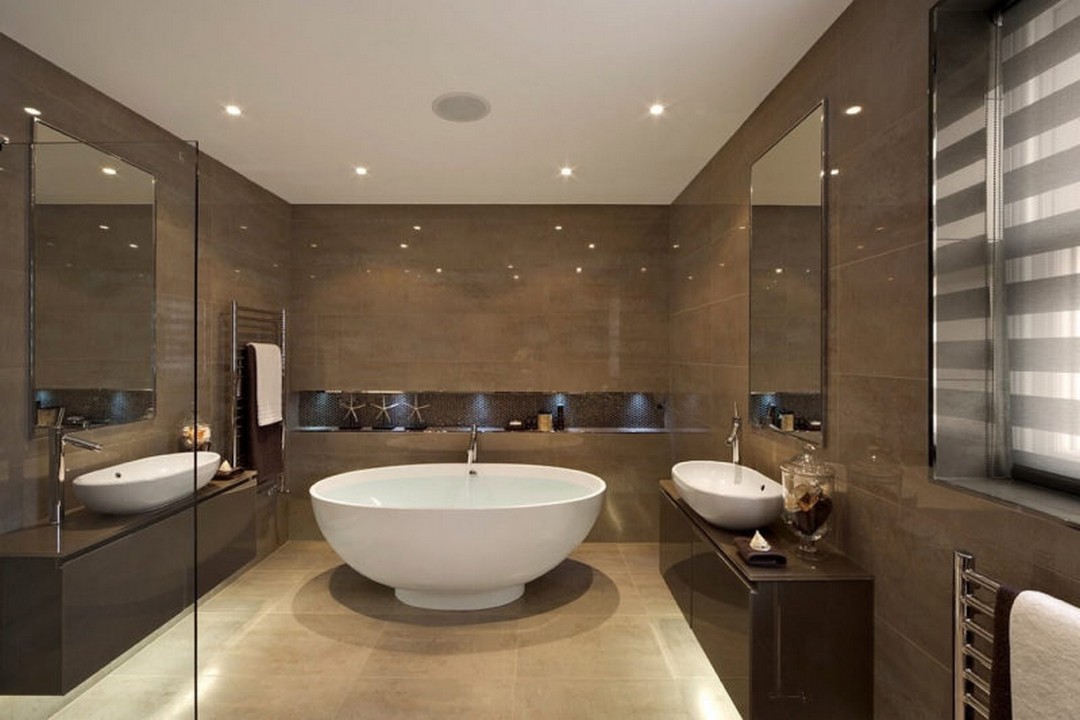
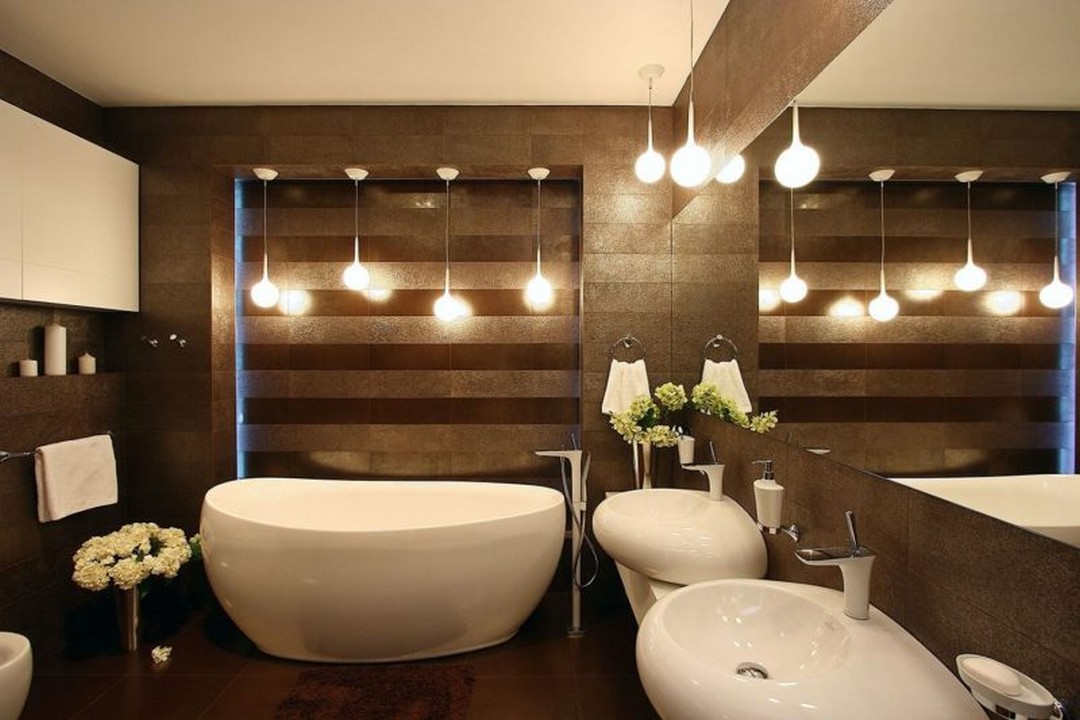
Bathroom designed in brown
Blue: A soothing color that particularly suits a nautical-style bathroom.
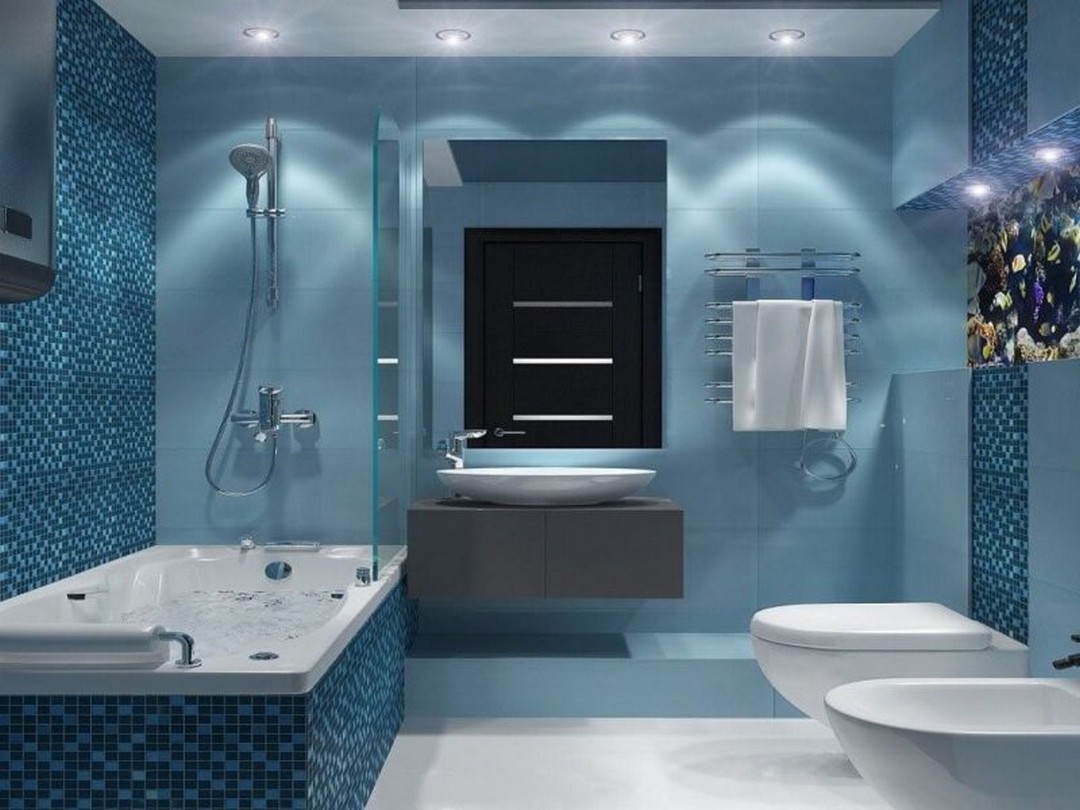
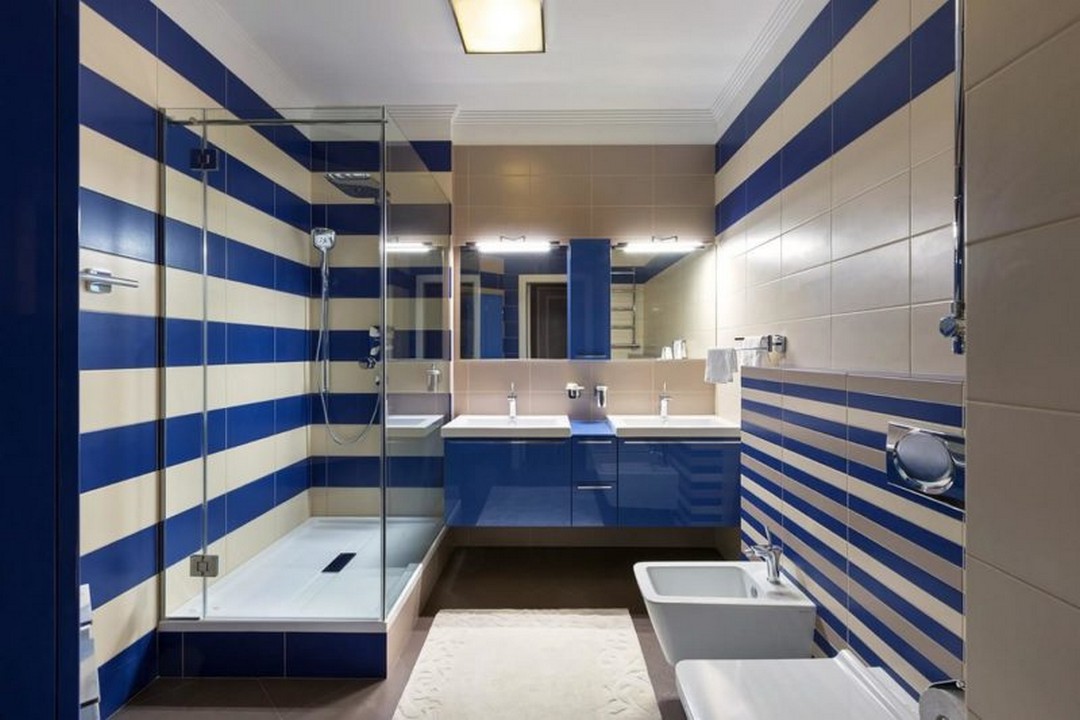
Bathroom decorated in blue
Surface finish
When designing any room in the house or apartment, the selection of decor materials presents an important step. The bathroom was no exception. However, given the high moisture and humidity in the bathroom, the selection of finishing materials should be approached with particular care. Only this way can you create an appealing yet durable bathroom.
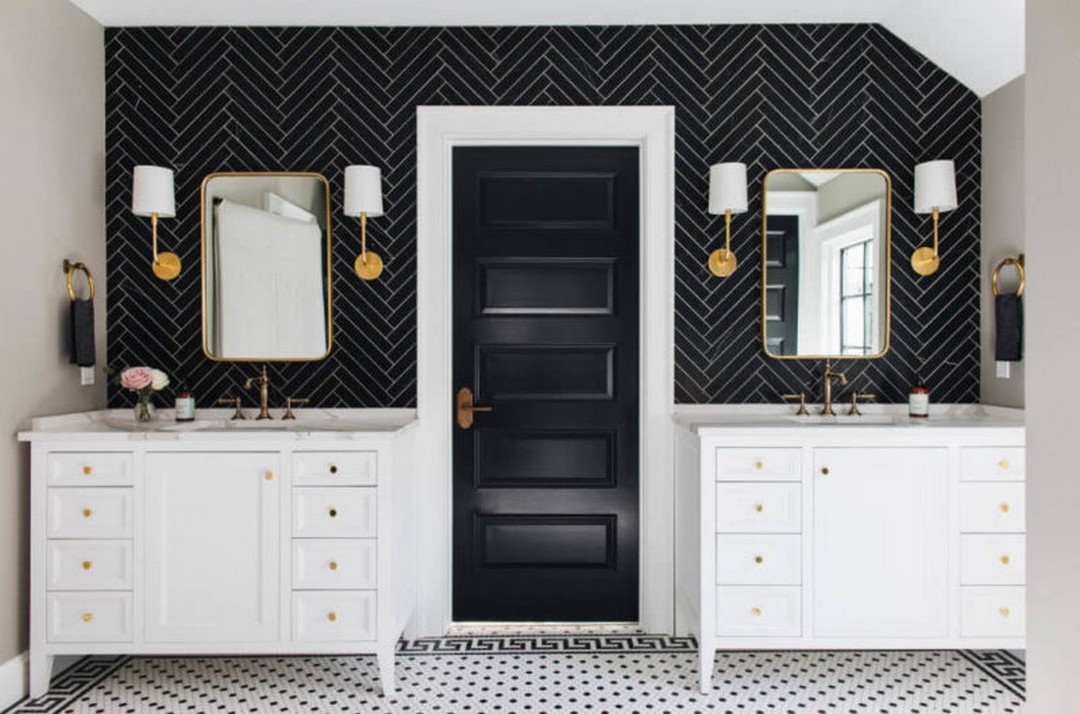
Despite the limitation brought on by the high levels of moisture and humidity in the bathroom, there are plenty of suitable décor materials, as manufacturers create more unique products specifically for the bathroom.
Tip: To eliminate moisture in the bathroom, set up good ventilation, both natural and artificial. In these ways, you can significantly increase the durability of the finishing materials.
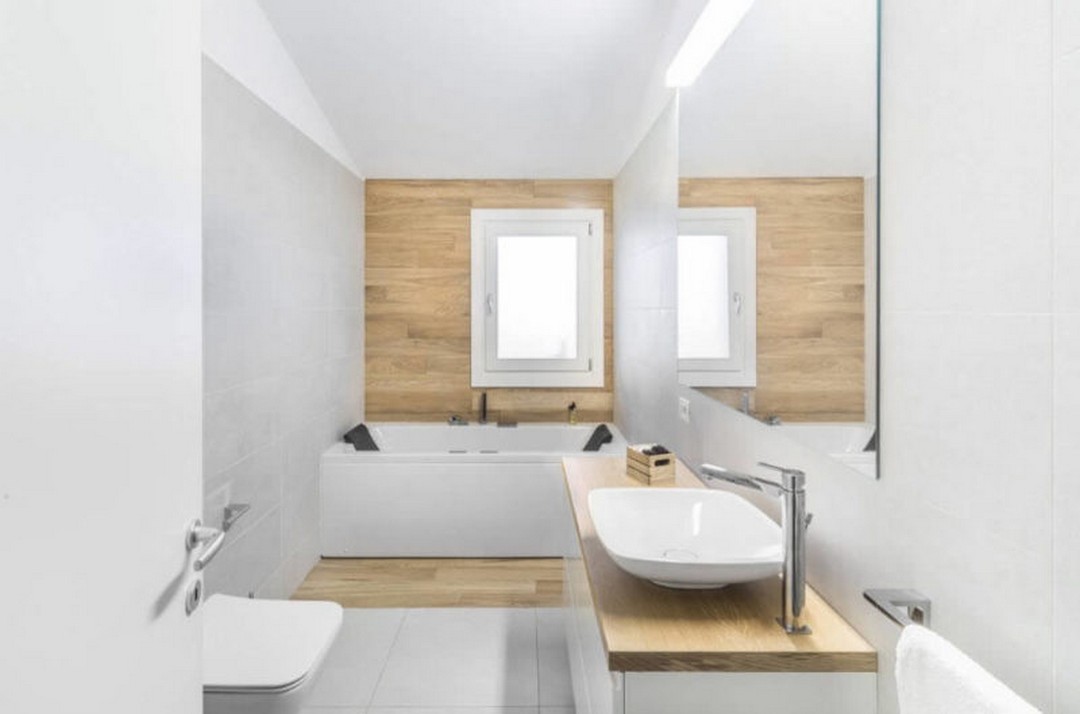
Wall decoration in the bathroom
There is a large assortment for building bathroom walls today. However, the most popular options are:
Ceramic tile: This is the most popular option, which has a wide range of shades and shapes, from square to rectangular, polygonal, and many others. The main advantage of ceramic tile is that it is resistant to moisture, temperature changes, and mechanical damage. Consequently, with proper installation, it can last more than 30 years. On the other hand, the main disadvantage of tile is the complexity of its installation. To install tiles, you will most likely need to hire the services of a professional, who will carry perform functions such as carrying out measurements, installation of tiles, and grouting.
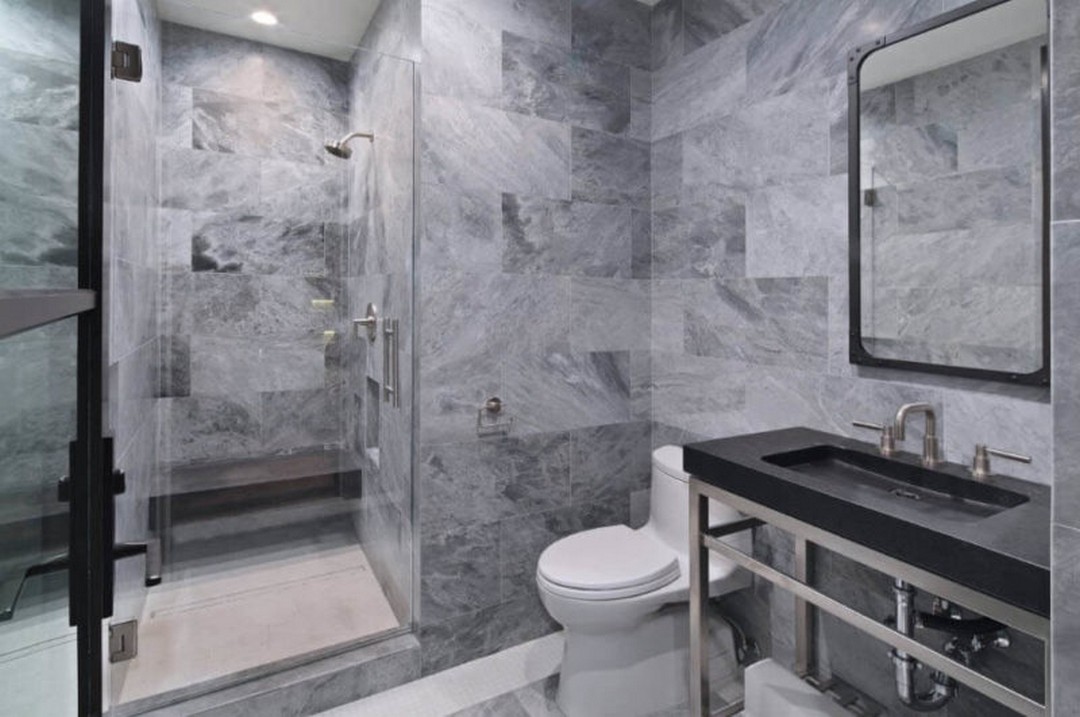
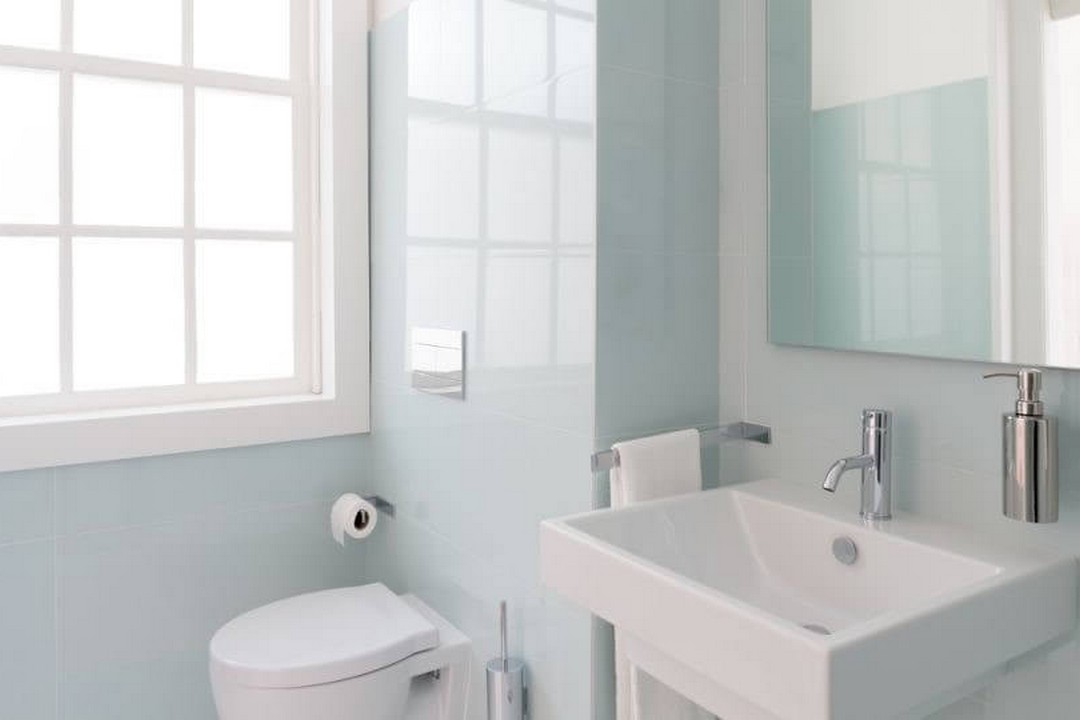
Decoration of the bathroom with ceramic tiles
Natural stone: The most common options are granite or marble. Of course, natural stone is extremely costly, but its many advantages are worth the high cost. They include:
- Durability;
- Resistance to chemical and mechanical damage;
- Strength;
- Water-resistance;
- Attractive appearance.
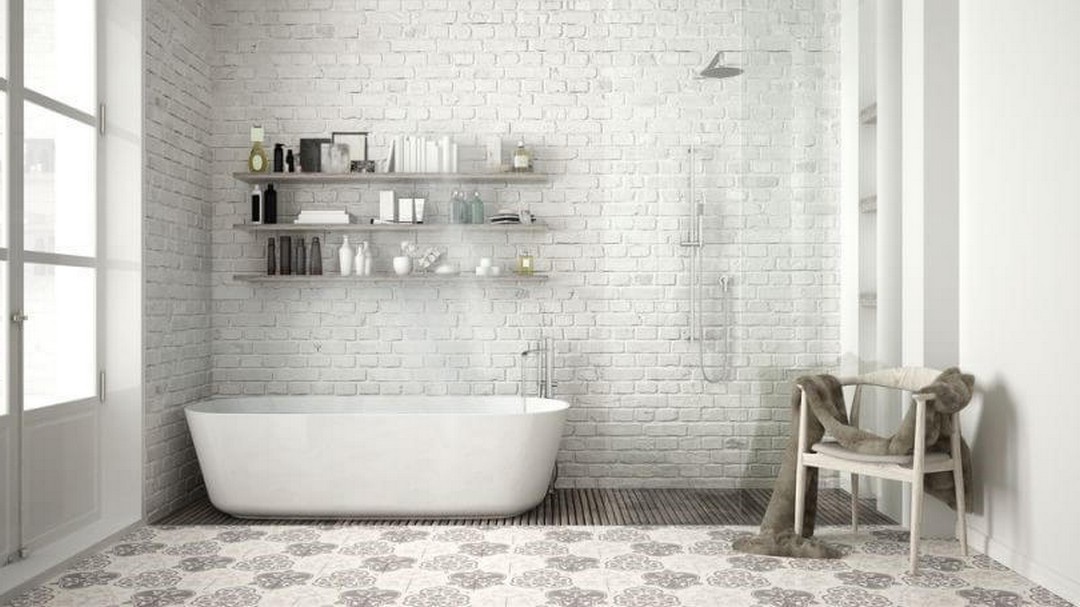
PVC panels: To decorate your bathroom, you can choose from plain PVC panels and other variant options, such as those with decorative patterns. Some PVC panel models imitate wood, brickwork, marble, and even leather. The main feature of such panels is the simplicity of their installation, as the installation can be done even without the help of professionals. However, you need to be cautious to get all the measurements correctly.
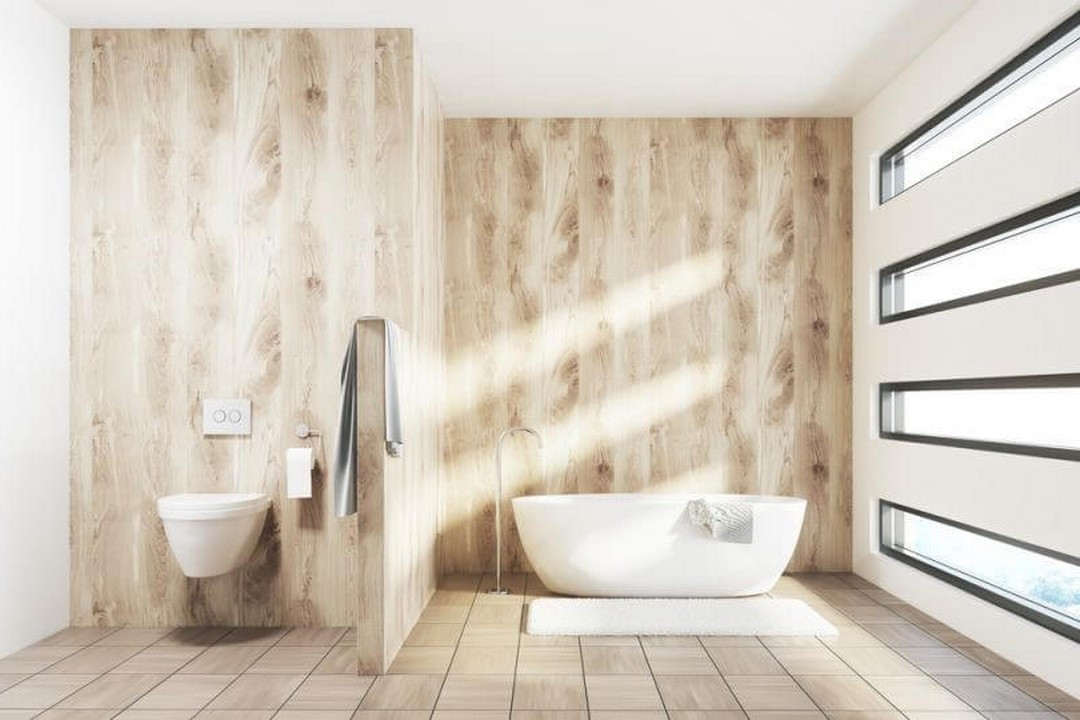
Natural wood: While many people think wood is unsuitable for the bathroom, it, in fact, works very well. Modern processing methods make it possible to use wood even in rooms with high humidity. As a rule, special impregnations and protective varnishes are used in the processing, thereby protecting the wood from the moisture and humidity of the bathroom. However, you also need to be cautious to choose the right type of wood. For the bathroom, beech, cedar, larch, oak, and teak are excellent.
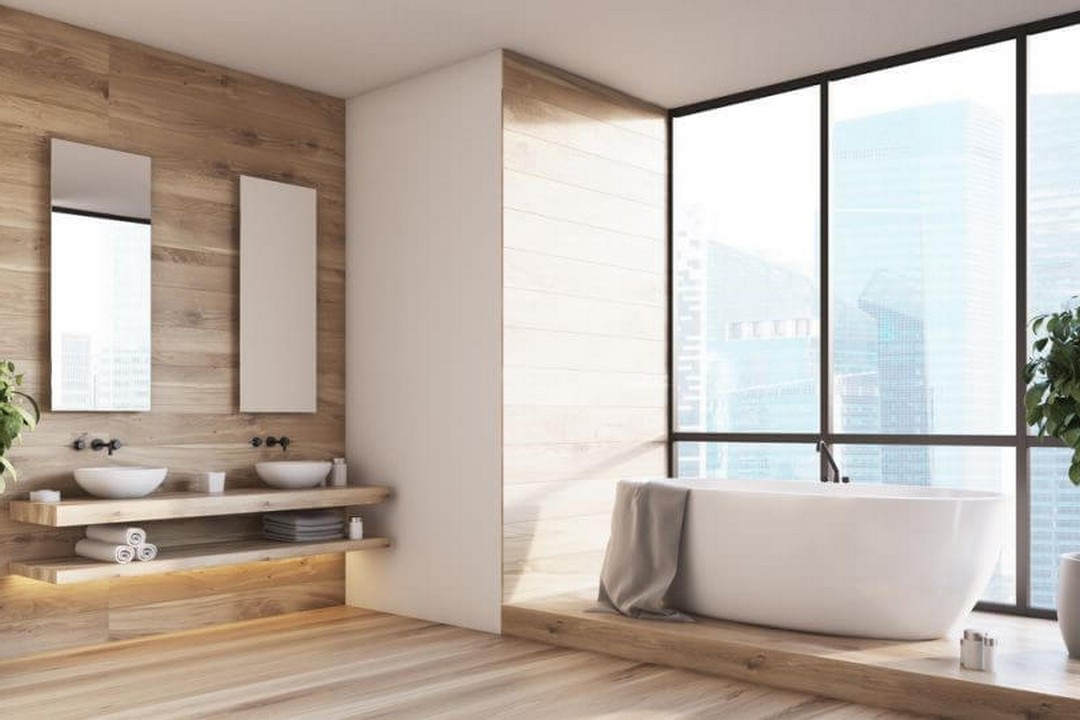
Glass: This material is great for decorating a bathroom in a hi-tech or modern style. You can use monophonic, multi-color panels, or glass plates with printed photos. As for the type of surface, the glass can be:
- Glossy;
- Matte;
- Embossed.
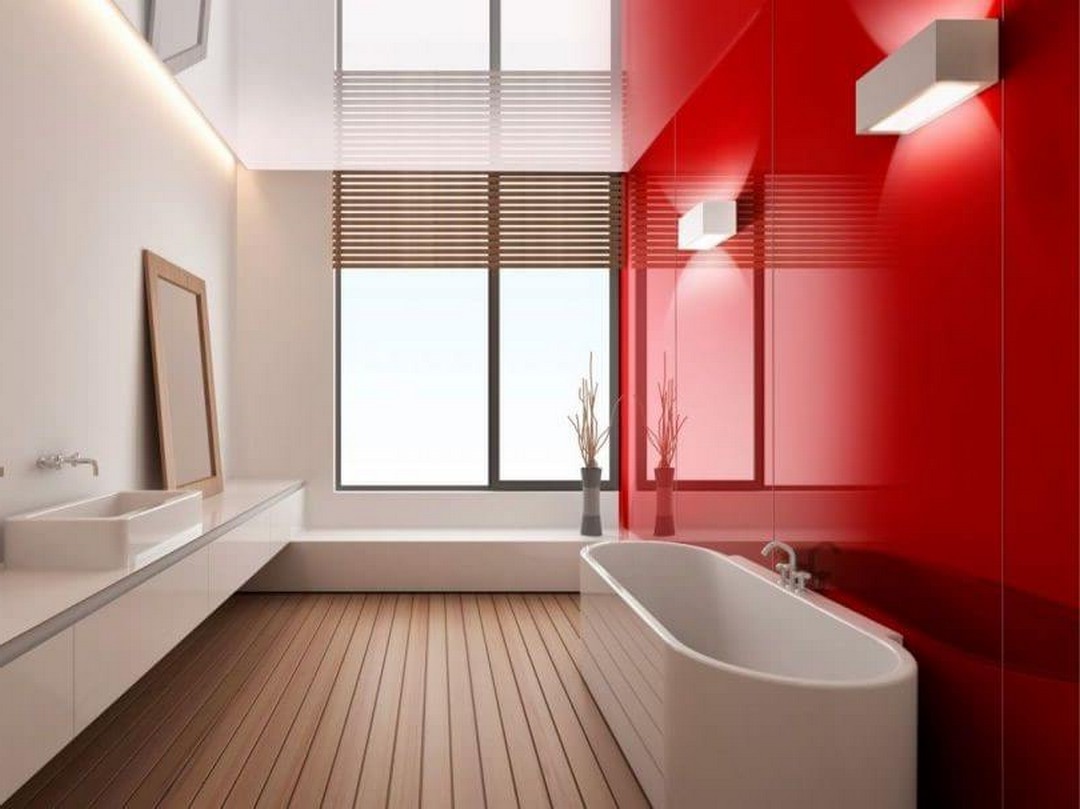
Metal: While metal can be used as a stand-alone material, it is most often installed in combination with wood or stone. For the design of the bathroom, metal sheets coated with zinc or chrome is highly suitable. In addition to long service life, metal offers safety as it a non-combustible material.
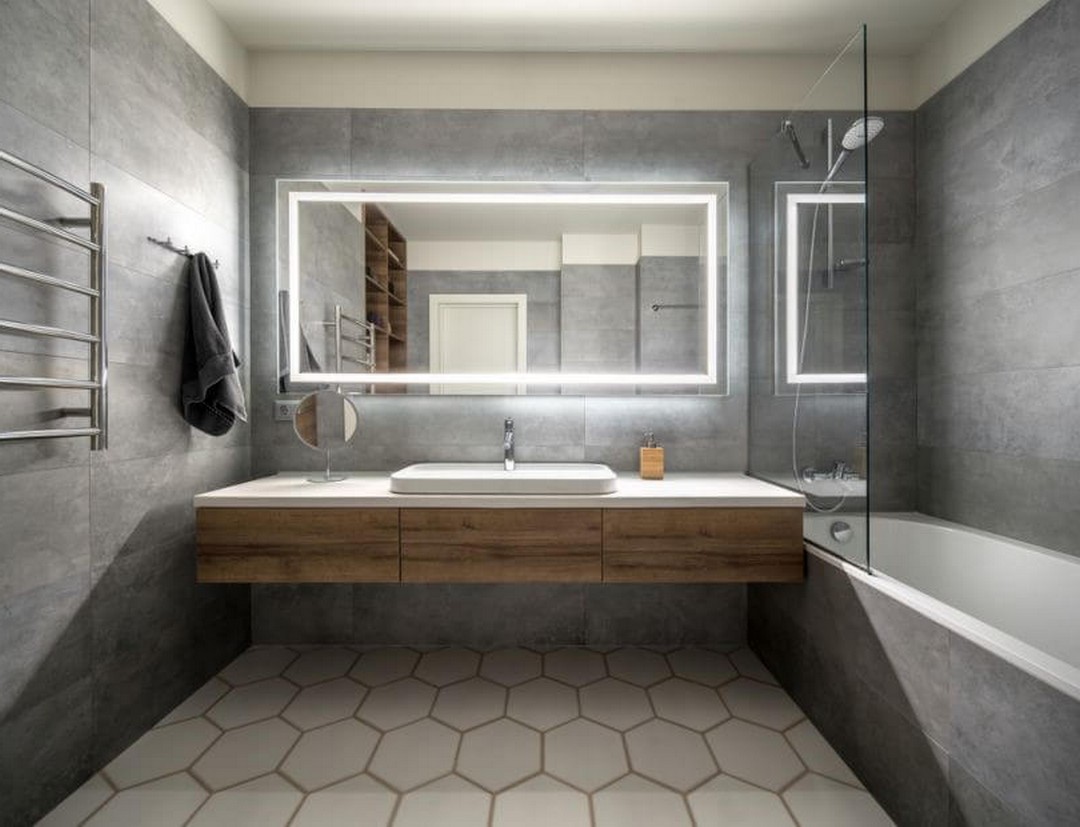
Paint: For the bathroom, specific types of paint are suitable. The most common options are:
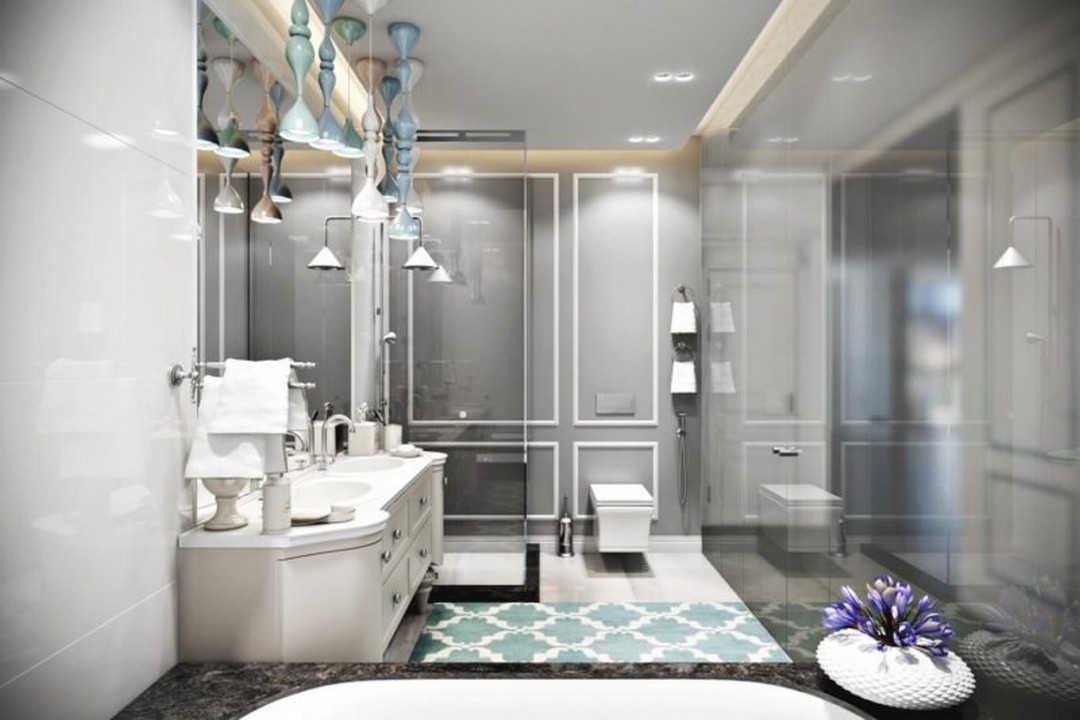
- Latex;
- Acrylic;
- Silicone.
Important! Before applying the paint, it necessary to pay attention to aligning the base of the wall as much as possible. Otherwise, defects on the surface of the wall, such as bumps are visible and the paint gets damaged sooner than it should.
Stucco: Decorative plaster has an attractive appearance (which is just what the Venetian plaster for walls are for) and long service life. However, stucco also comes with disadvantages, mainly its high cost and complex installation.
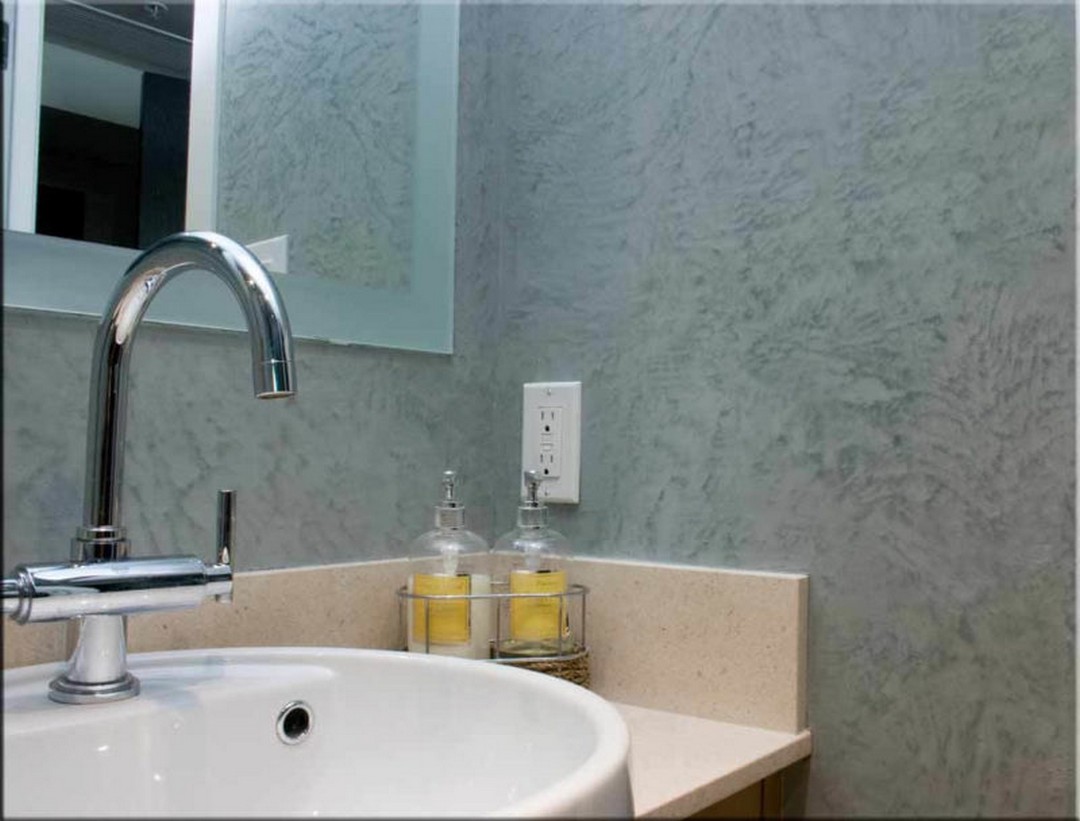
Bathroom flooring
Porcelain stoneware is most often used as a floor covering in the bathroom. These ceramic tiles are made in a way that significantly reinforces their wear resistance and durability.
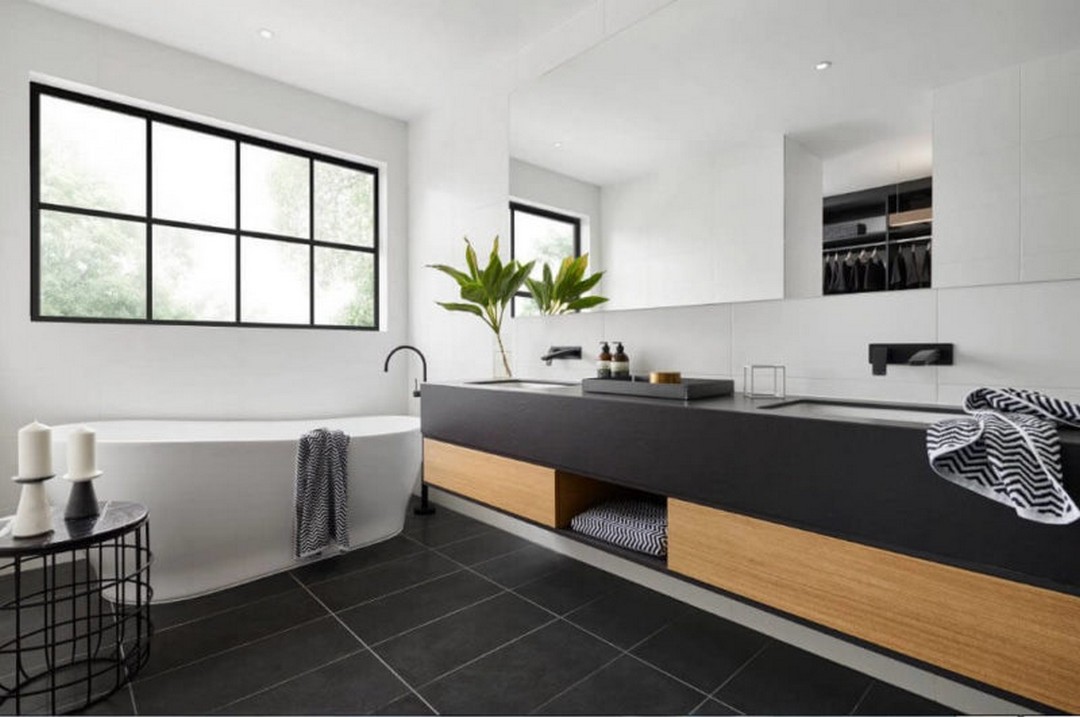
In addition, porcelain tile has several other advantages, including:
- A wide range of shades: You can choose the flooring to match the walls or play with contrasts, for example, by combining a dark floor with light-colored walls.
- Anti-slip effect: The surface of porcelain tile is slightly rough, which protects against slipping, especially when the surface is wet.
- Water resistance: This property is necessary for any bathroom flooring. Porcelain tile retains its quality, even under the influence of moisture, and is able to withstand a large amount of water, a characteristic that is especially useful in case the bathroom floods.
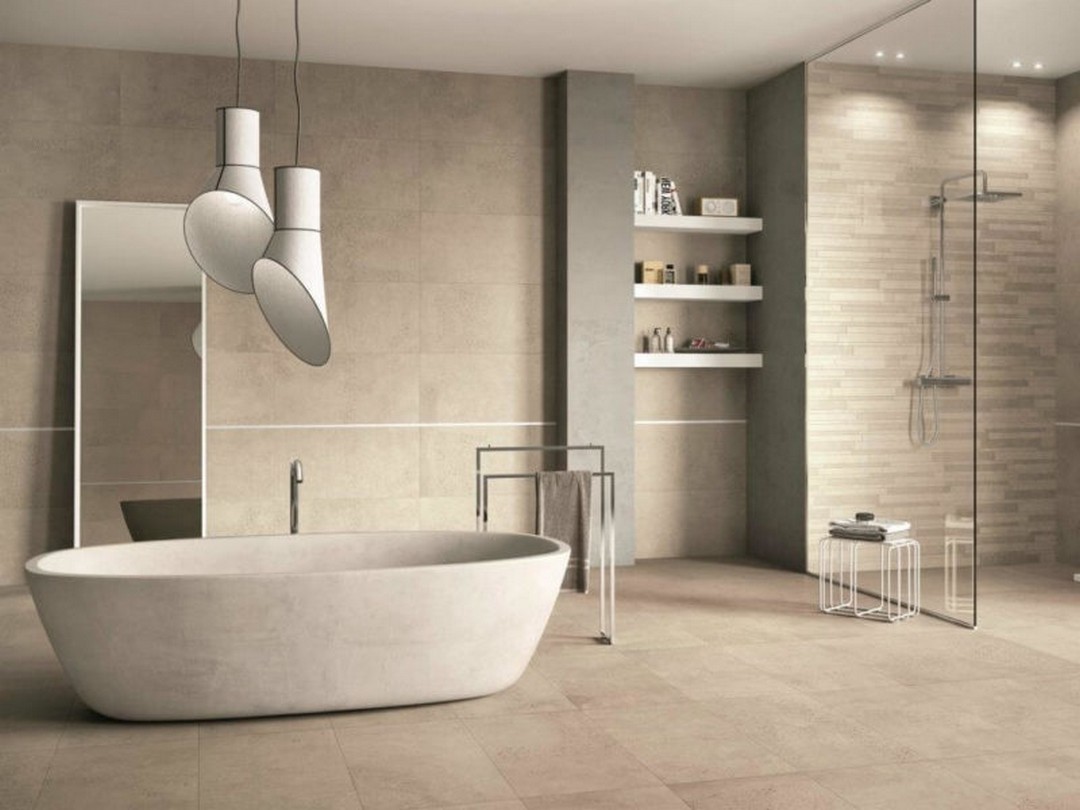
If you do not fancy porcelain stoneware, you can instead install one of the following options:
- Water-resistant laminate: It provides reliable protection against water. The cost of a water-resistant laminate is much more expensive, but it can last more than 20 years, even in a bathroom with high humidity.

Important! Do not mistake moisture-proof laminate for waterproof laminate! Moisture-proof laminate is mainly suitable for the kitchen and deteriorates from a large amount of water, whereas water-resistant models, marked with a special icon, can survive even withstand flooding.
Processed wood: For lovers of natural and environmentally-friendly coatings, wood presents the ideal option. Most often, larch or teak is chosen for use in the bathroom. Remember that in order for the floor covering to last as long as possible, it must be treated with special impregnation and several layers of varnish.
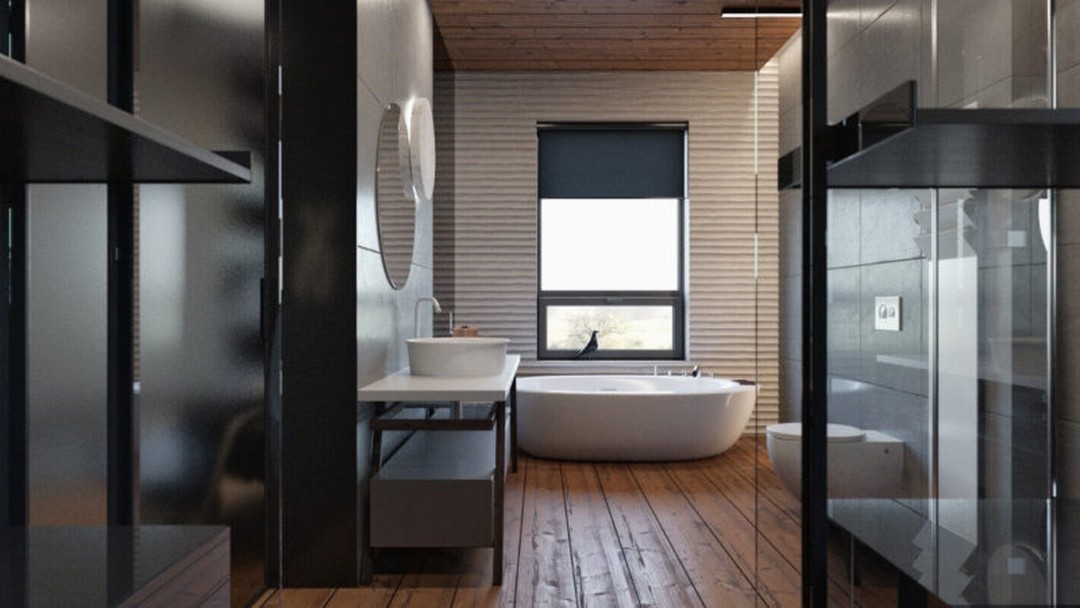
Bathroom designed with a wooden floor
- Bulk floor: This floor covering, which resembles ceramic tile, is water-resistant and easy to install. Due to the absence of seems, it is easy to prevent water from getting under the coating. What’s more, the high degree of adhesion allows the bulk floor to attach firmly to the base.
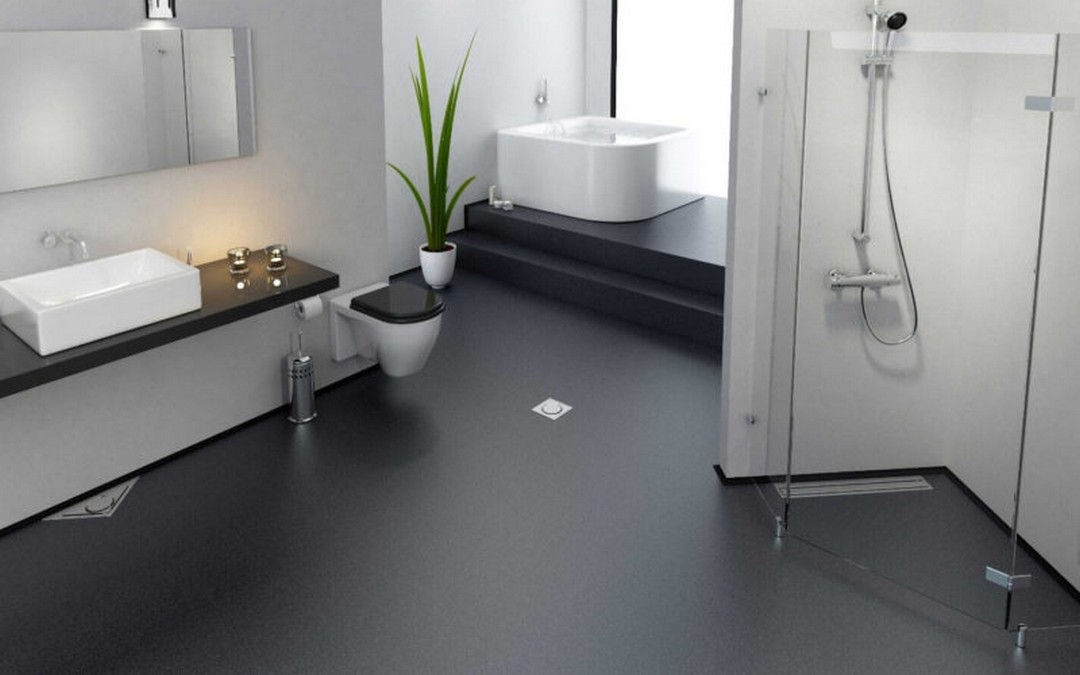
- Linoleum: This is the most budget-friendly of all bathroom floor design options. Linoleum is also easy to install and maintain. The only thing that is important to monitor when laying linoleum is proper sealing of the joints. We recommend laying the roll in a single layer to prevent moisture from getting under the base.
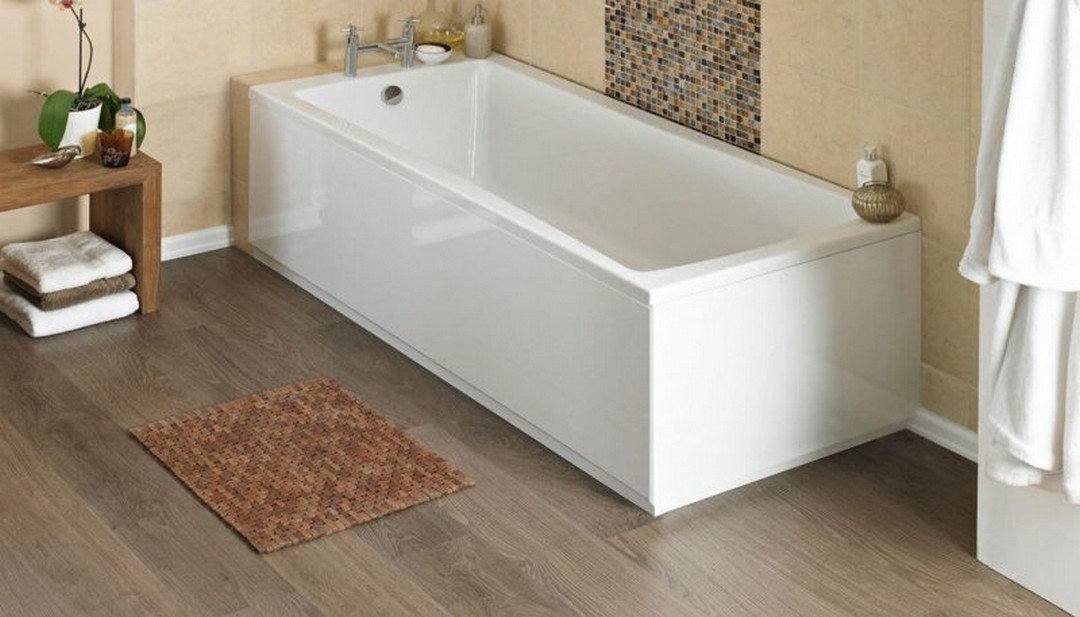
What is the best ceiling for the bathroom?
Installing the ceiling in the bathroom is an important aspect of designing the bathroom. As this article stressed earlier, when selecting finishing materials for the bathroom, you should carefully select materials, placing specific emphasis on their moisture resistance. Currently, the most popular methods for decorating the ceiling in the bathroom are:
- Putty and paint: This is the most common finishing method. It gained popularity due to its affordability and ease of application of the materials, allowing the occupant of a home to apply the putty and paint without the services of a specialist. Putty and paint are not particularly durable. However, if applied correctly, they can last about 10 years.
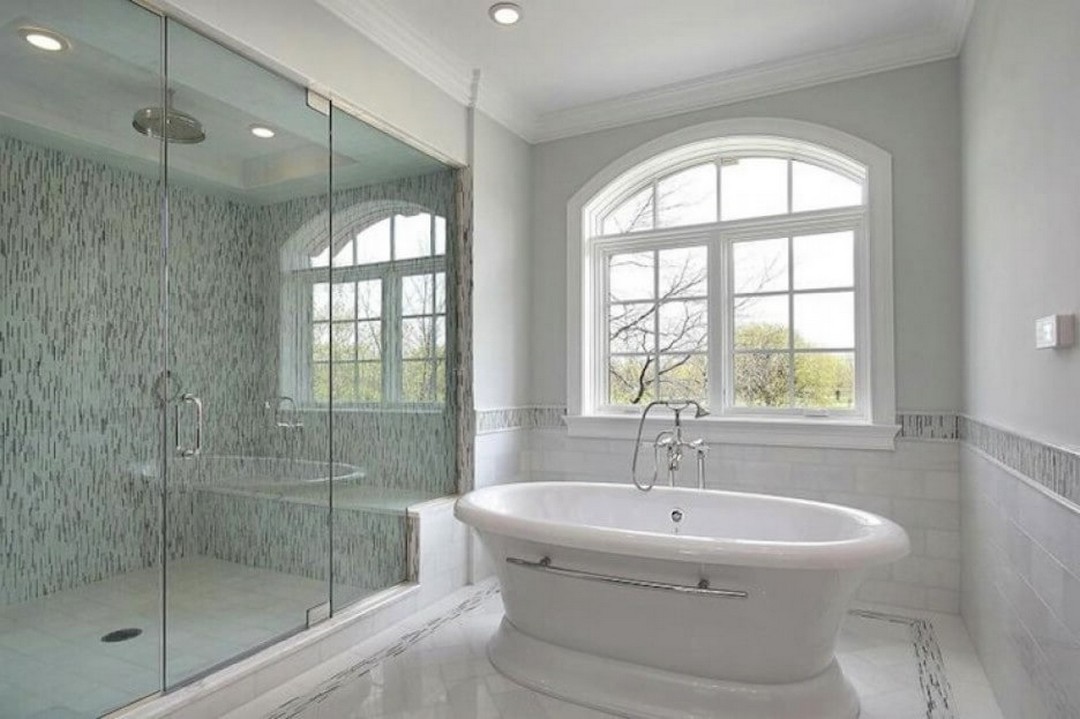
Important! Please note that all materials for this kind of ceiling, including paint, primer, and putty, must be waterproof.
- Plastic PVC panels: Plastic PVC is a versatile material that is easy to install and maintain. However, as a ceiling in the bathroom, it is recommended that you install them only if you have a well-established ventilation system since dirt and moisture can clog in between the panels, causing damage.
- Rack ceiling: For a rack ceiling, special slabs are used. The frame of a rack ceiling is made of aluminum, plastic, or steel. For the bathroom, it is advisable to choose metal rails that are tolerant of moisture. Luckily, you can easily mount a rack ceiling yourself, helping you cut on costs.
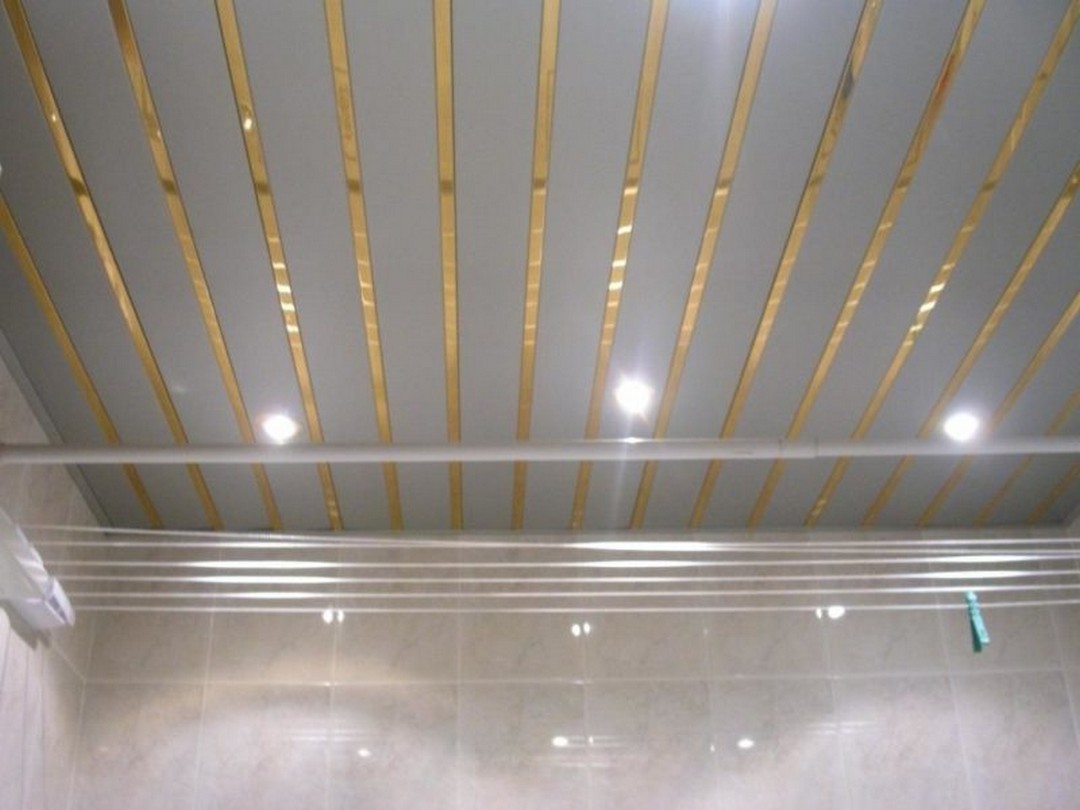
- Drywall: It is mounted on a wooden or metal frame. When buying drywall material, pay attention to the mark ‘GKLV‘, which means that the gypsum plasterboard is waterproof. This kind of material allows you to create original multi-level ceilings with lamps built into the frame.
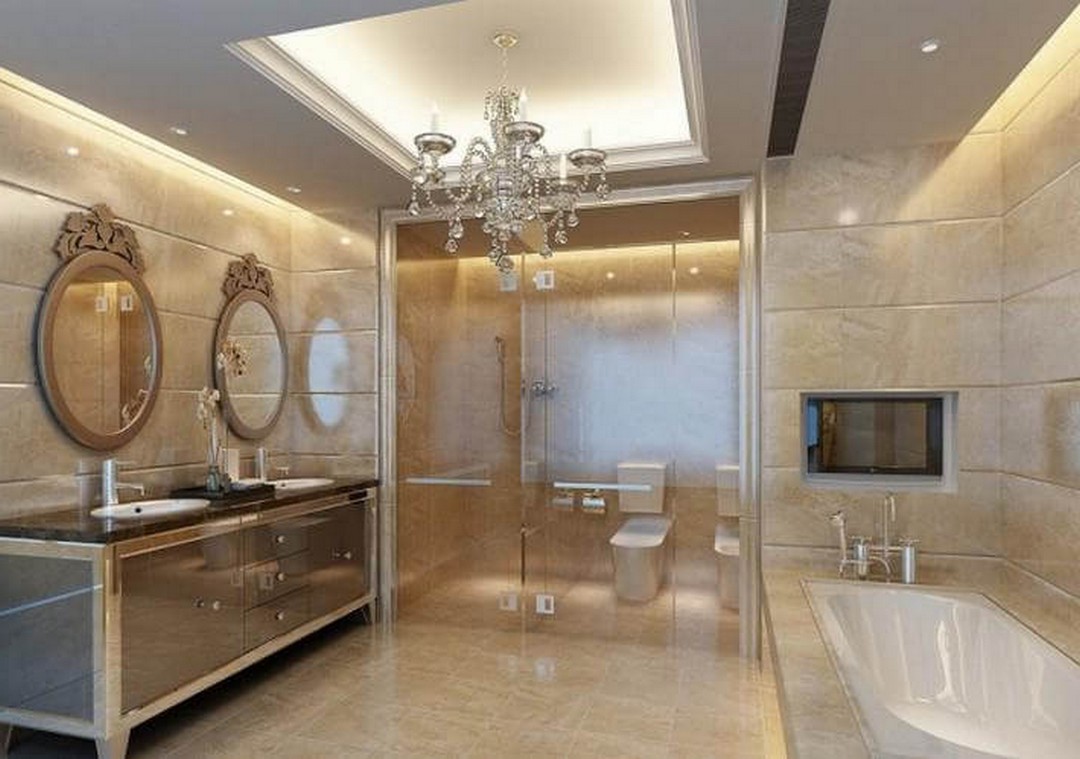
- The mirror: A mirrored ceiling is advantageous when used in the bathroom as it visually increases the space. The mirror ceiling is installed by fixing small mirror plates onto a metal frame that resembles a large mosaic. The only significant drawback of mirrored ceilings is the difficulty in maintenance, as they must be constantly wiped and polished to shine.
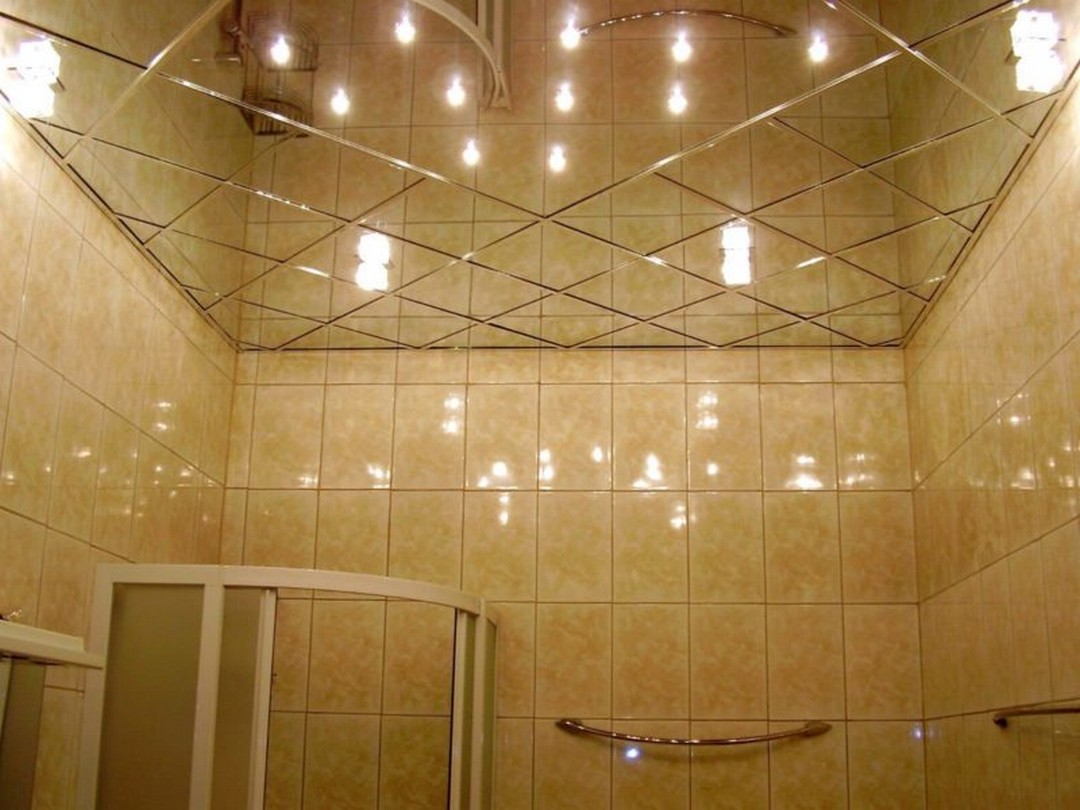
Plumbing in the bathroom – Latest trends
Plumbing is the foundation of any bathroom. Therefore, it is important to choose not only practical but also stylish plumbing elements that will fit into the modern design of your bathroom. In addition, pay attention to quality, since durable plumbing is desirable. The choice of elements will primarily depend on the area of the apartment. Often, the main plumbing elements in the bathroom are:
- A bath or shower (depending on your preference);
- Sink;
- Toilet bowl.
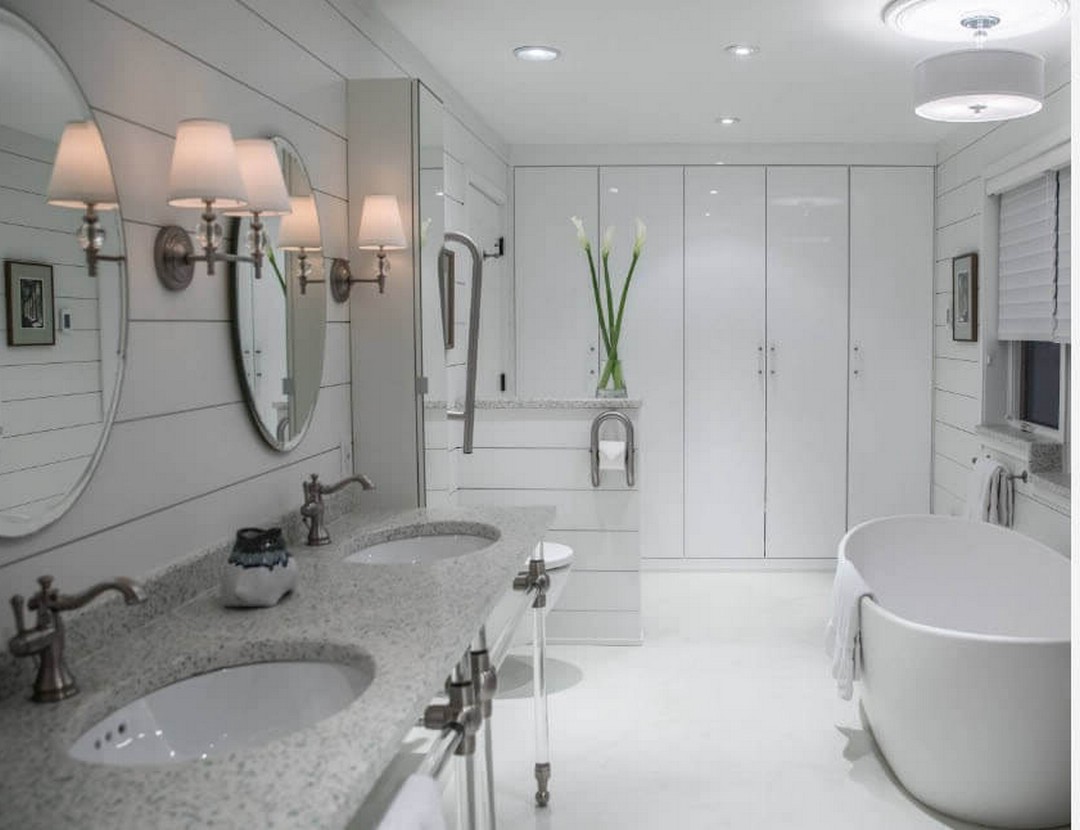
In some cases, you can install additional elements such as:
- A second sink (if two or more people live in the house);
- Bidet.
Choose plumbing and bathroom furniture
With the many choices available in the market, you can go with traditional options or more non-standard modern variants. In either case, ensure that the measurements of the plumbing fit into those of the bathroom.
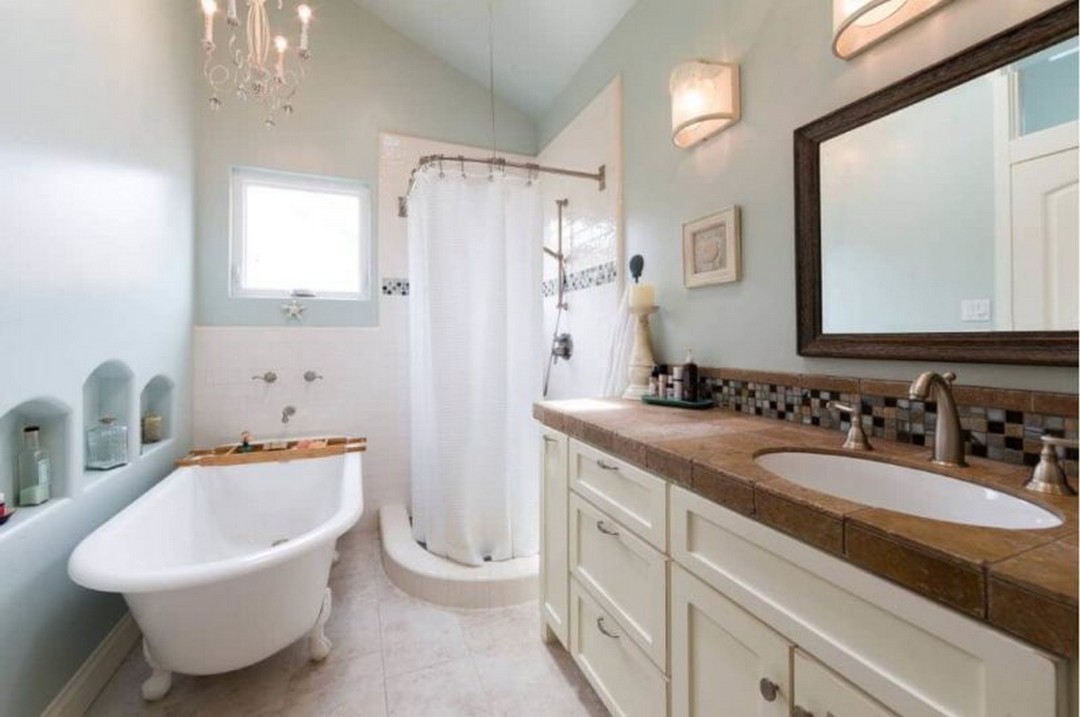
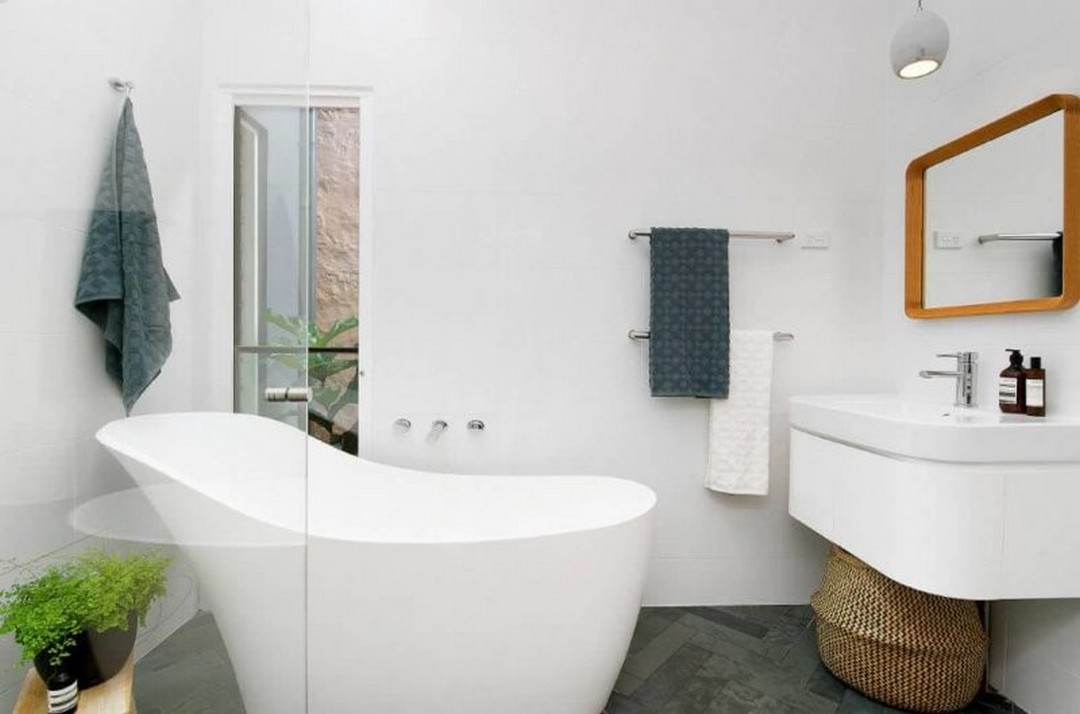

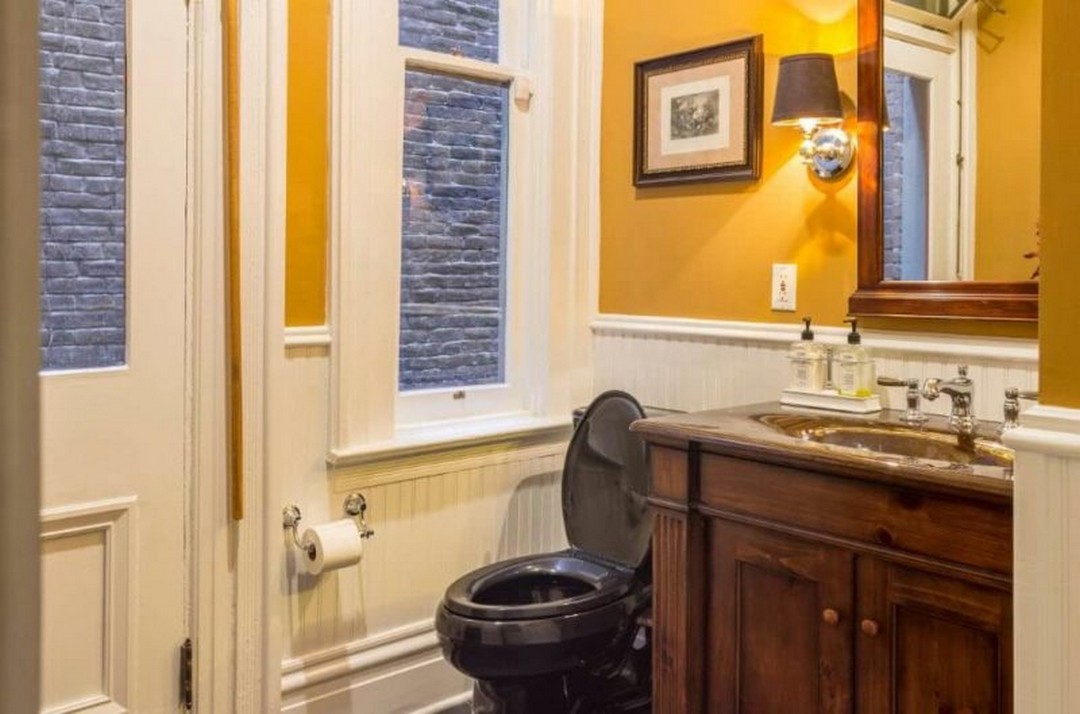
Storage Systems for the Bathroom
When designing a small bathroom, storage systems are an option, rather than a necessity. However, if space permits, try arranging special shelves for storing bath accessories such as towels and bathrobes, etc. The storage can also be installed in the following ways:
- Placing a cabinet under the sink;
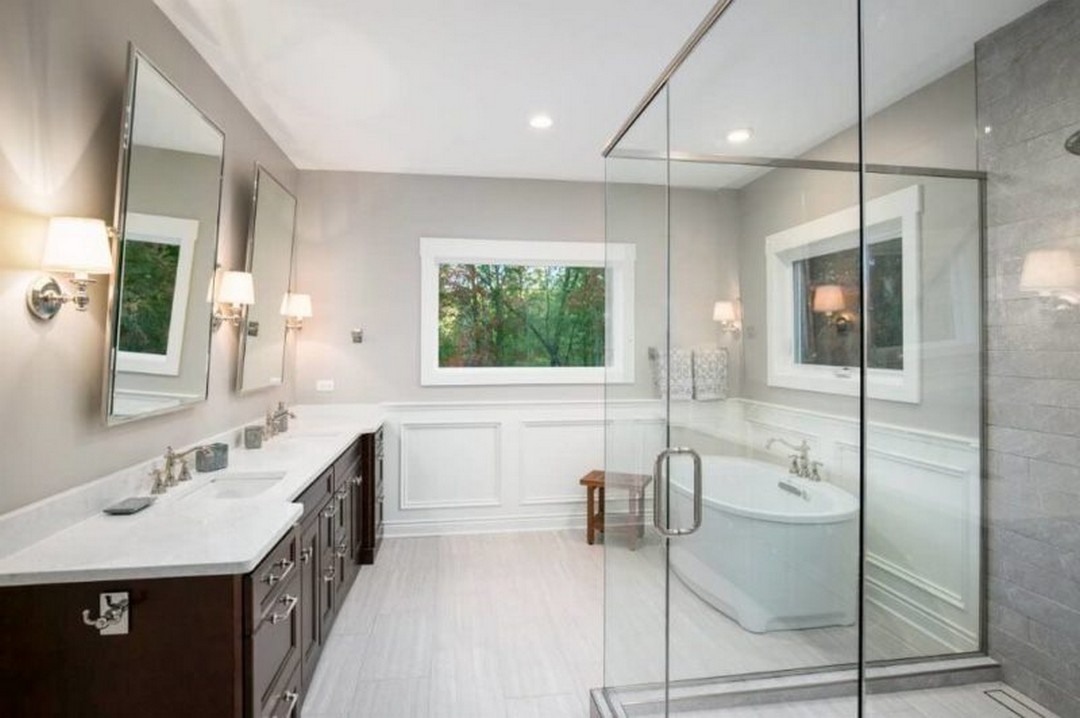
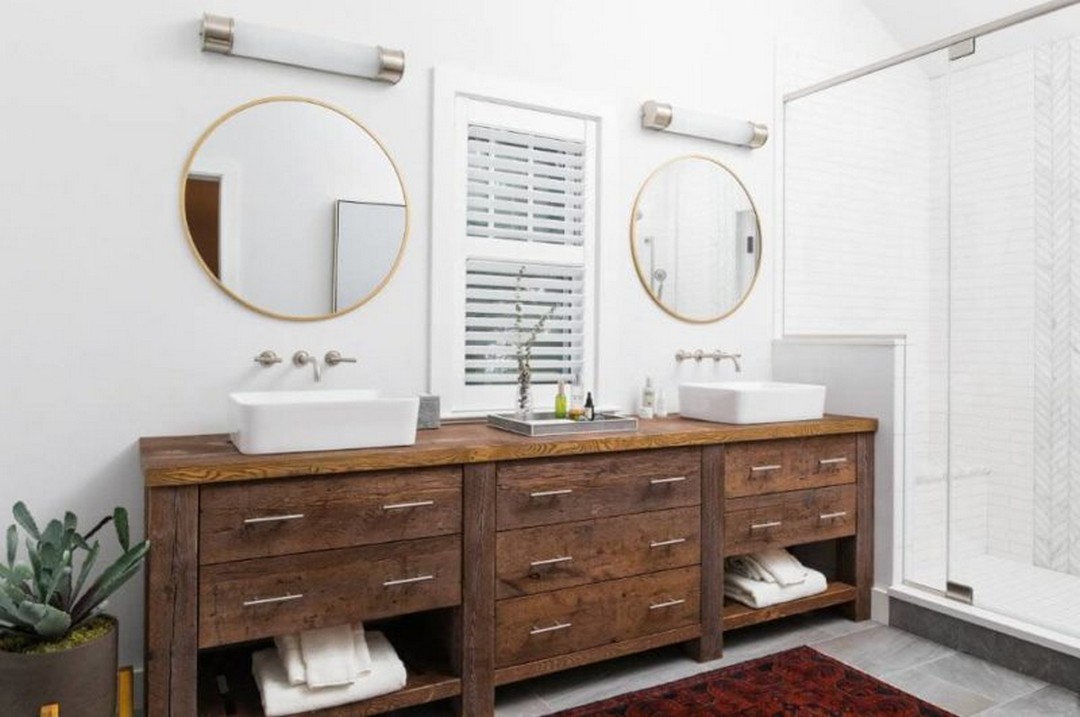
- Installing a wall cabinet with a mirrored door above the sink;
- Installing open racks
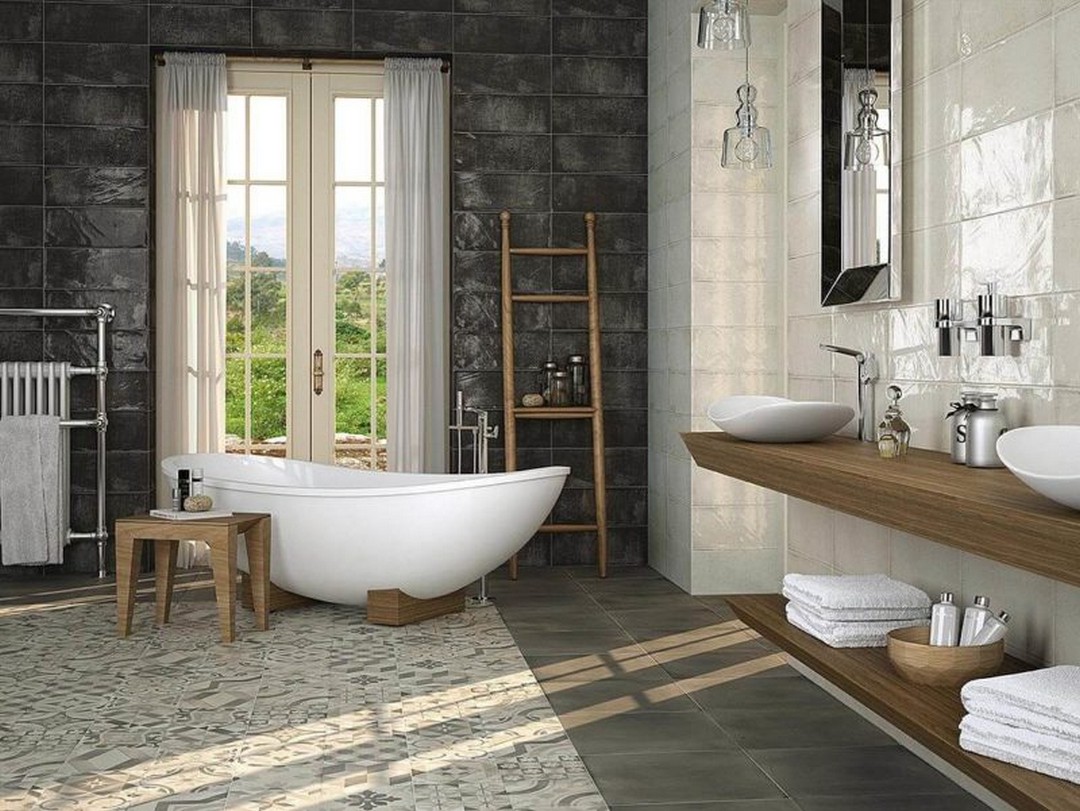
- Cabinets with transparent glass doors;
- Baskets for dirty laundry, etc.
The most common material for storage systems is specially-treated wood. Due to its noble appearance, it can fit into any bathroom design.
Modern bathroom lighting
The bathroom should be as well-lit as possible, especially since the activities of the bathroom require good visibility. There are two main ways to install lighting in the bathroom:
- The use of several spotlights located around the perimeter of the bathroom.
- Installation of one pendant lamp and several additional light sources, for example, near a mirror or in a shower cabin.
Please note that properly-selected lighting devices can become a highlight of the bathroom interior. However, remember that the bathroom lighting fixtures need additional protection against moisture.
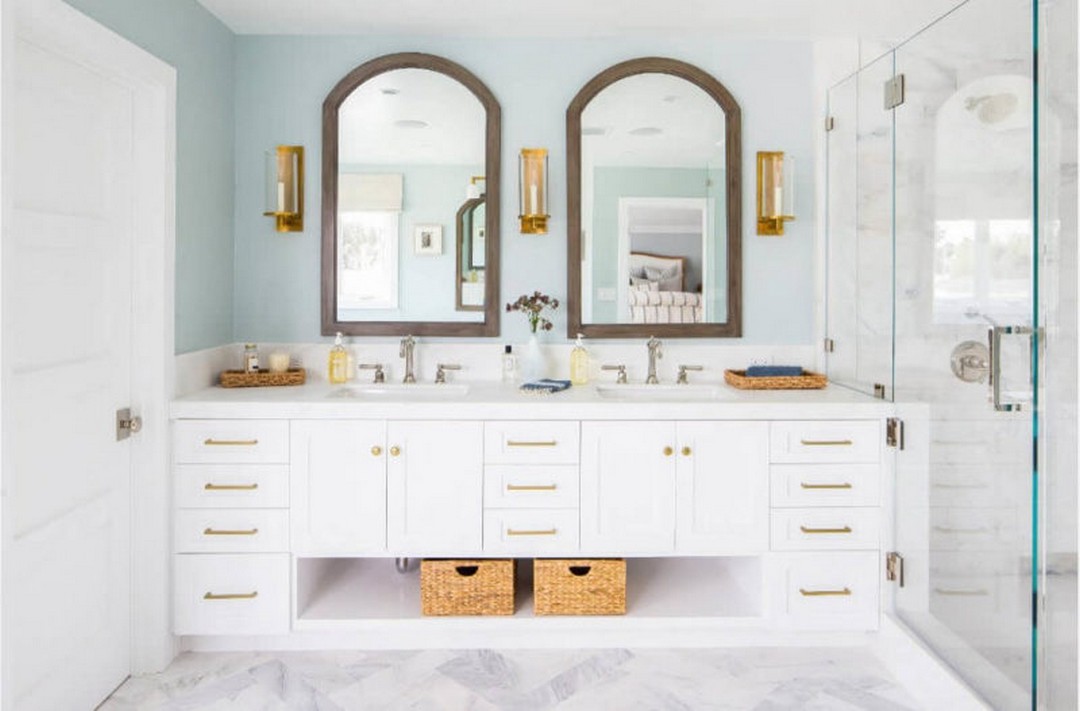
Decorative elements in the bathroom
The decor of the 2020 bathroom should ideally be practical. The most common decorative elements are:
- Towel holders;
- Hooks and hangers;
- Shelves and laundry baskets;
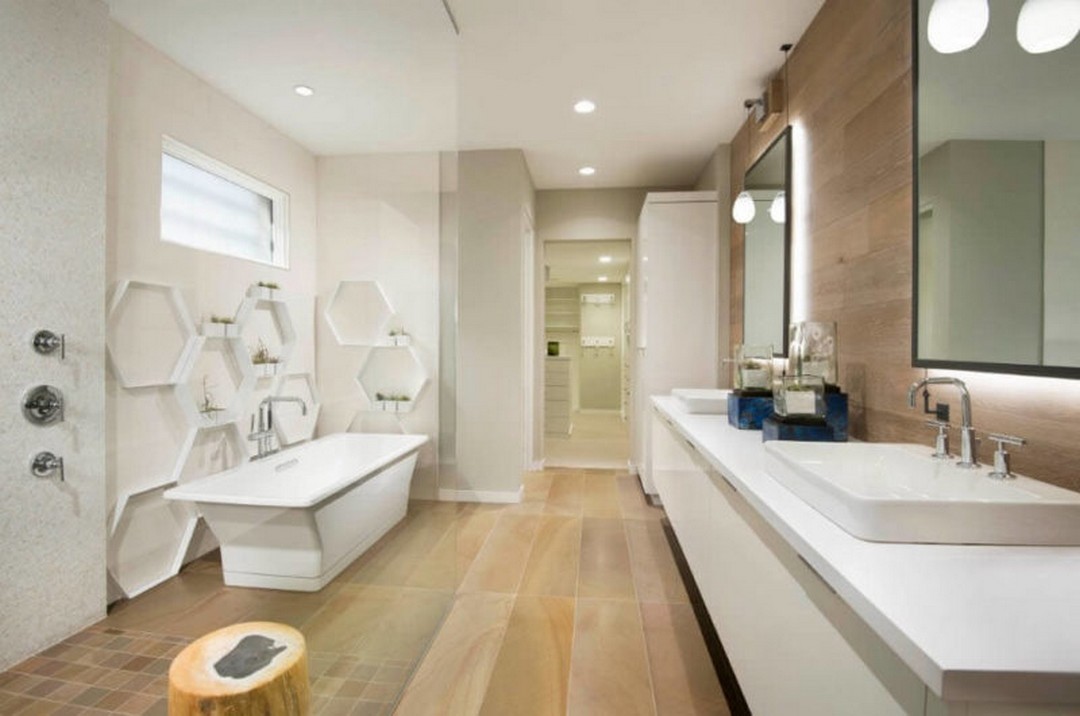
Original shelves as a bathroom decor
- Holders for soap and glasses for toothbrushes;
- Frames for the mirror;
- Wall clocks etc.
Creating and designing a bathroom is a painstaking process, but also exciting. Do not be afraid to go beyond the rules and try new innovative ideas, allowing you to get a design that pleases you and accurately reflects your style.

